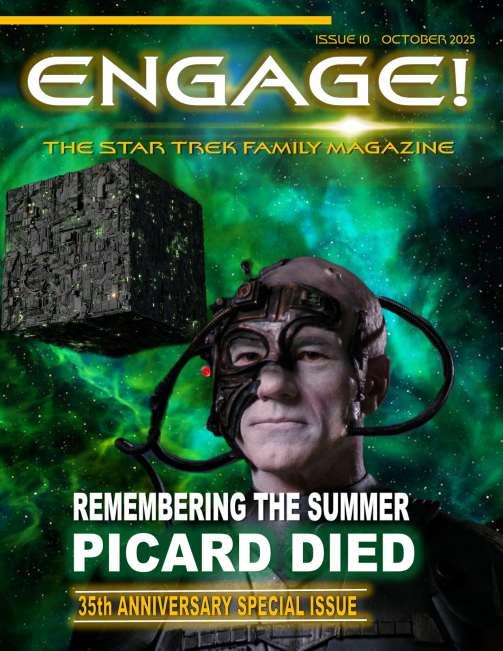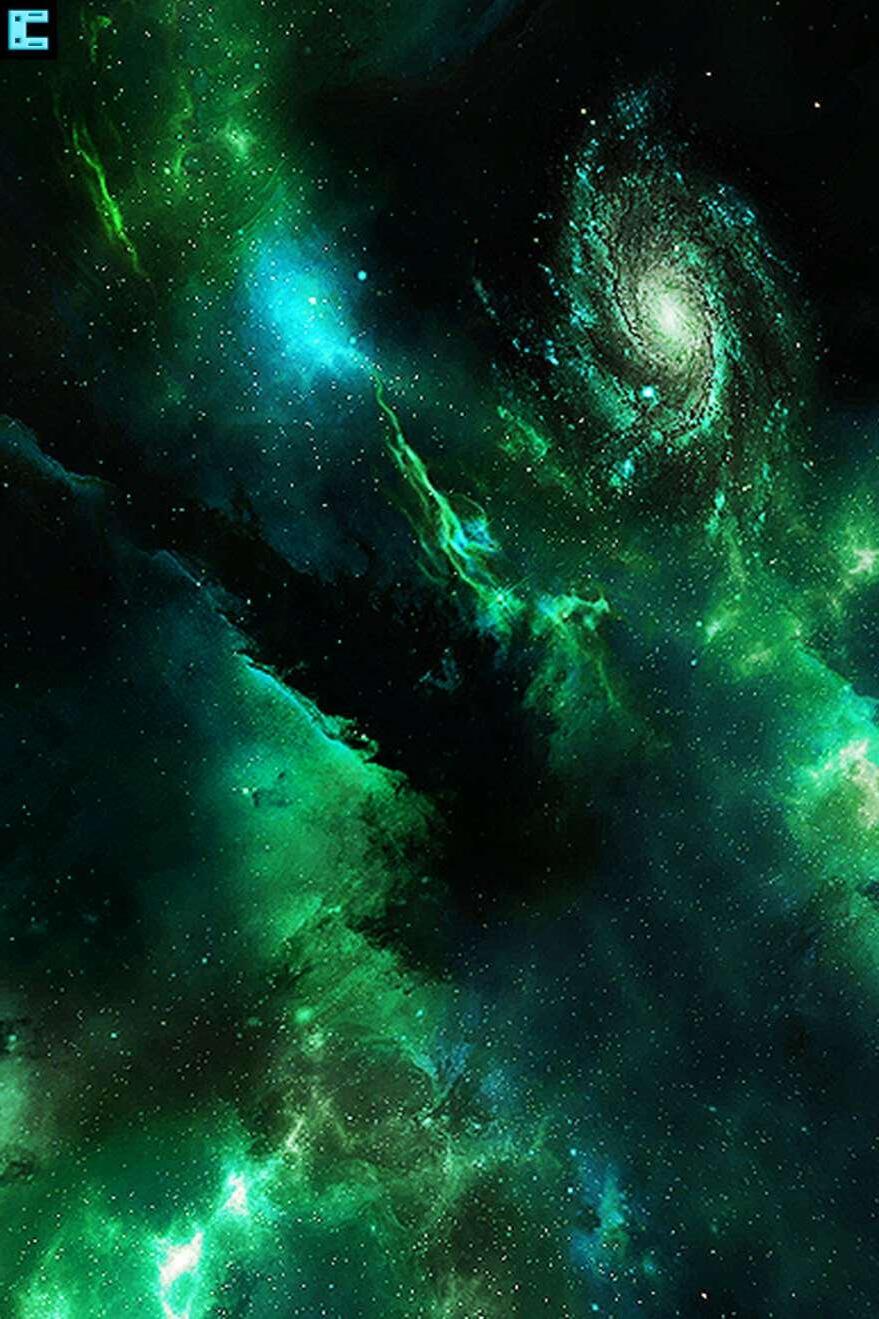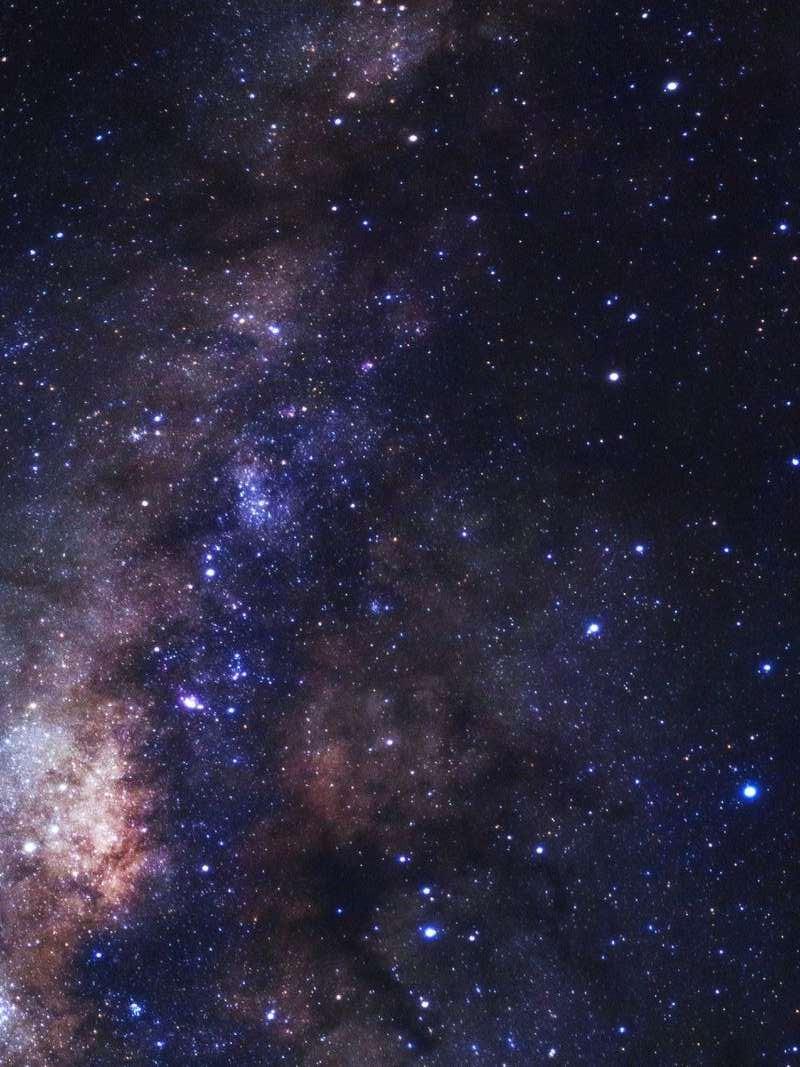



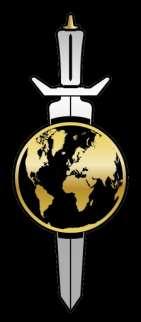
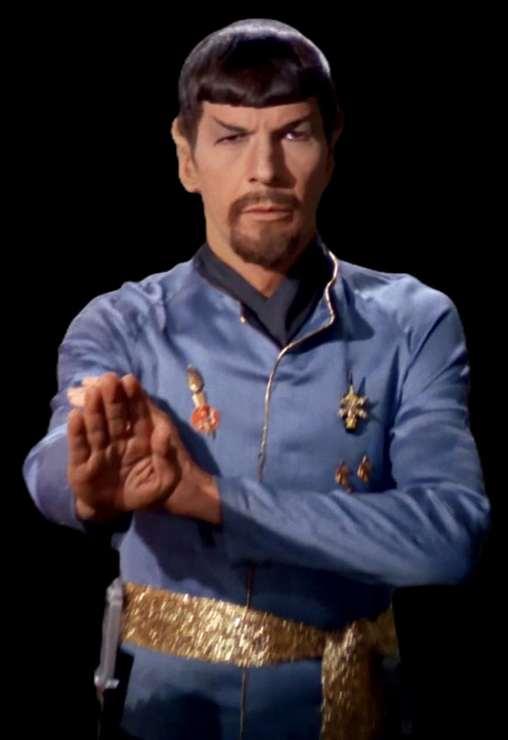
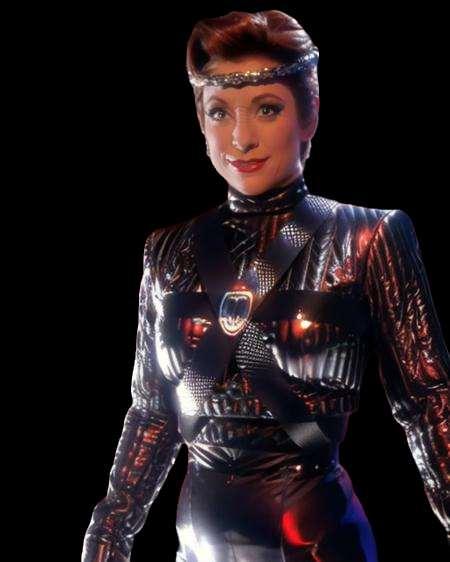
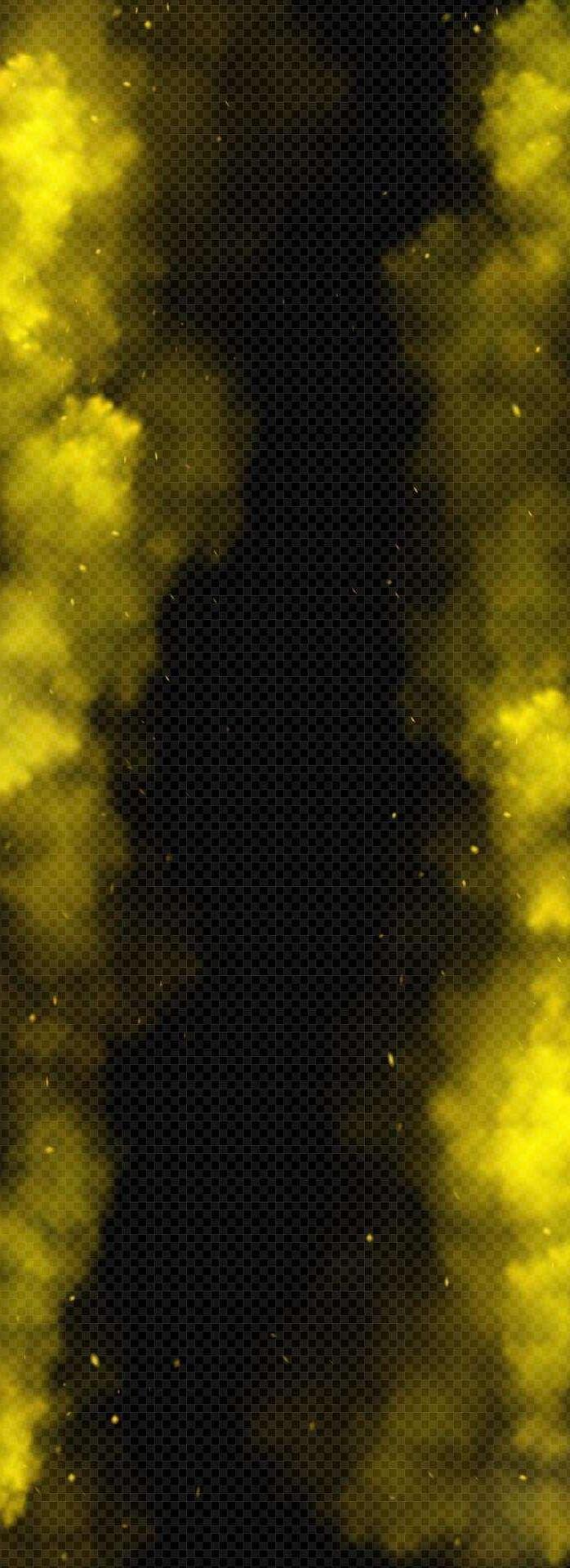



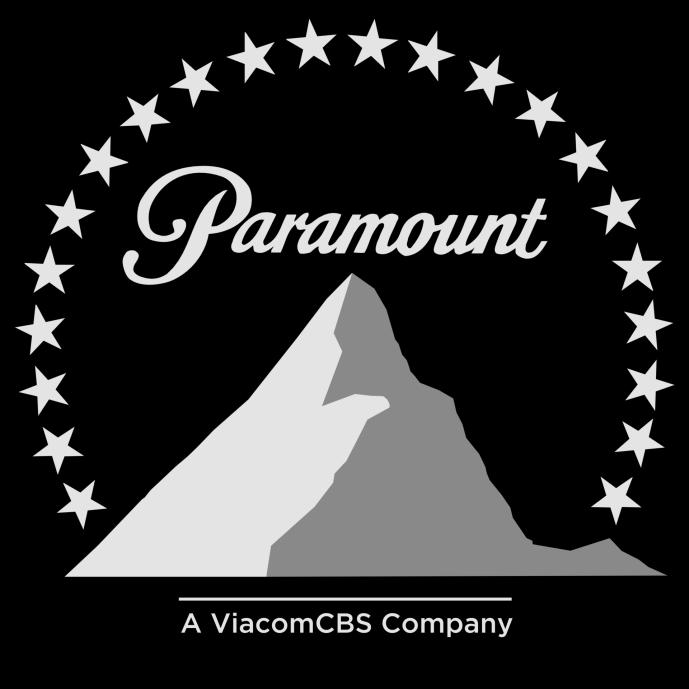
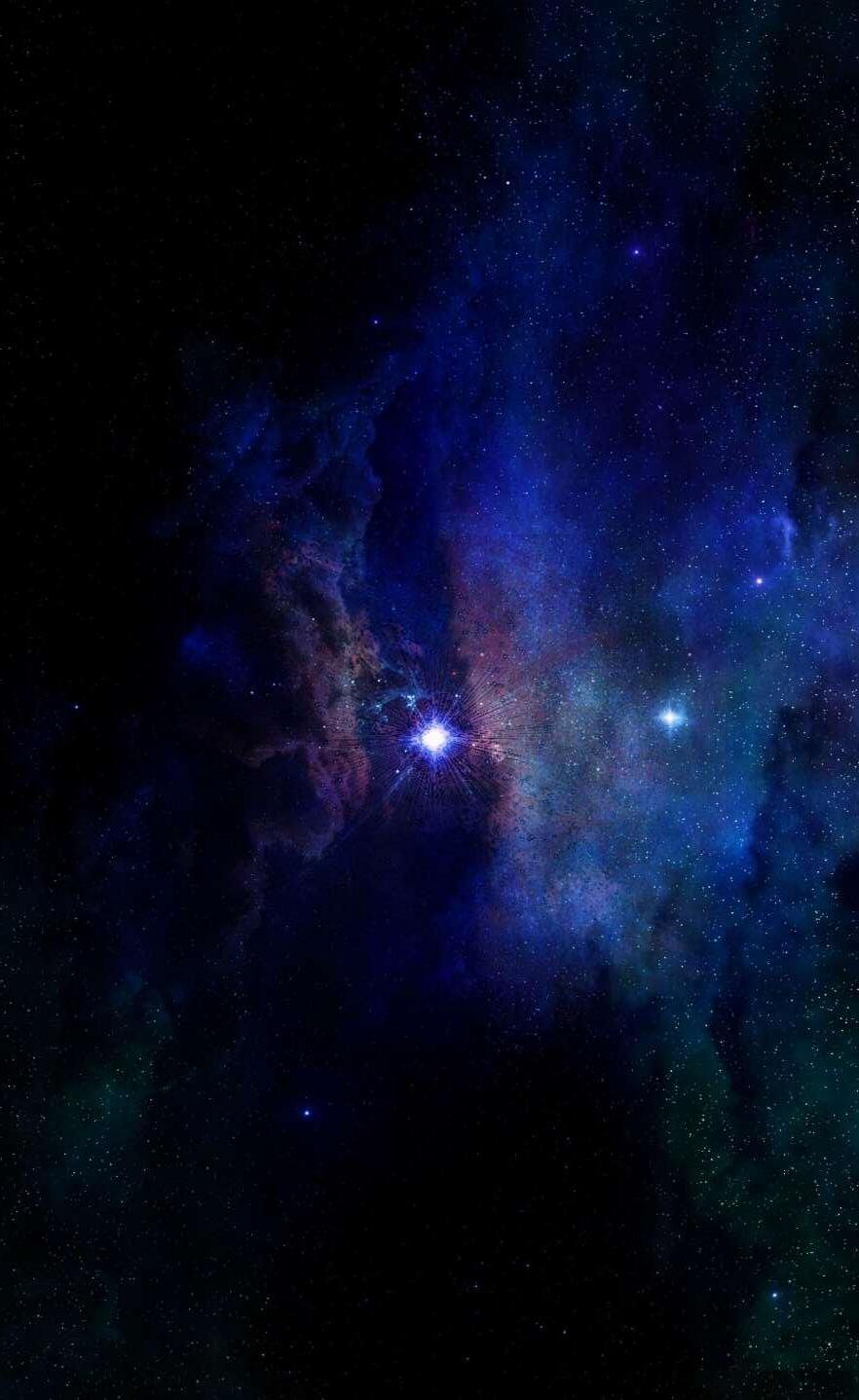


(Touch the Paramount Logo above to Sign up!)


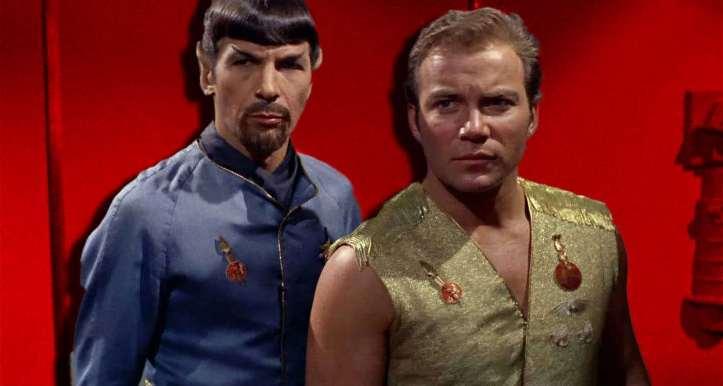

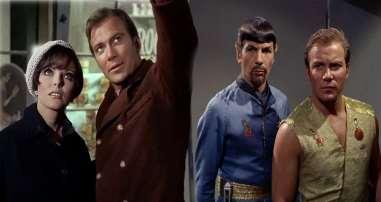




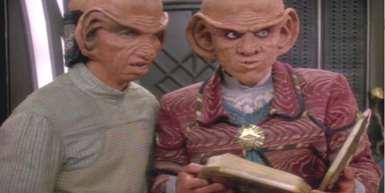
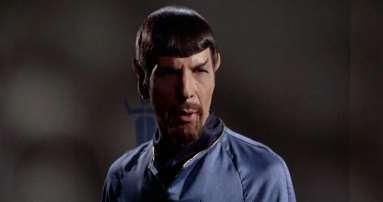


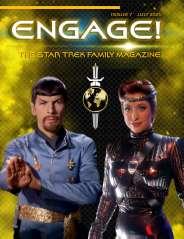

Nothing puts a shiver down my back more than the Mirror Universe episodes of Star Trek. We’ve travelled through the looking glass fourteen times (fifteen if you include the Lower Decks episode “Dos Cerritos”), and we’ve seen familiar characters acting in a very contrary way. This issue explores the ideas behind the ’mirror universe’ concept.
For some, the Mirror Universe is a unique break from the usual formulaic storytelling of Star Trek. For others, it is a painful reminder of the duality of humankind the notion that there is a good and bad in all of us. Still others can’t (or won’t) watch the alternate reality episodes that dive into the sometimes very dark corners of this franchise.
This issue features our first interview with one of the main cast Nana Visitor and a special look at her portrayal of Intendant Kira. We also look at some of the ways in which the Mirror Universe has been shaped throughout the various shows. Stephen Mirkin has a great piece in this issue that looks at how Edith Keeler’s character may have been the genesis for the Mirror Universe. David LoConto also takes an interesting look at the morality of the MU.
If Star Trek is a look at a very hopeful, positive and inclusive future, the Mirror Universe does what it is intended to do peers deep into a dark, dystopic and regressive future. These two may be diametrically opposed, but perhaps the truth is somewhere in between.
Perhaps by exploring such concepts we can recognize that there is a clear distinction between them, and acknowledge the proper path towards the future we all want.
Mark Sickle Founder & Host Star Trek Family
We are truly interested in receiving feedback from our readers and fellow fans! Really love an article that appears in our magazine? Truly disagree with someone’s take on a topic? How are we doing? Do you have suggestions for features, articles, etc.?

Have you always wanted to write about your love for Star Trek? We are always looking for volunteer writers to join our team! Send us an email at the ‘Contact Us’ link at left!
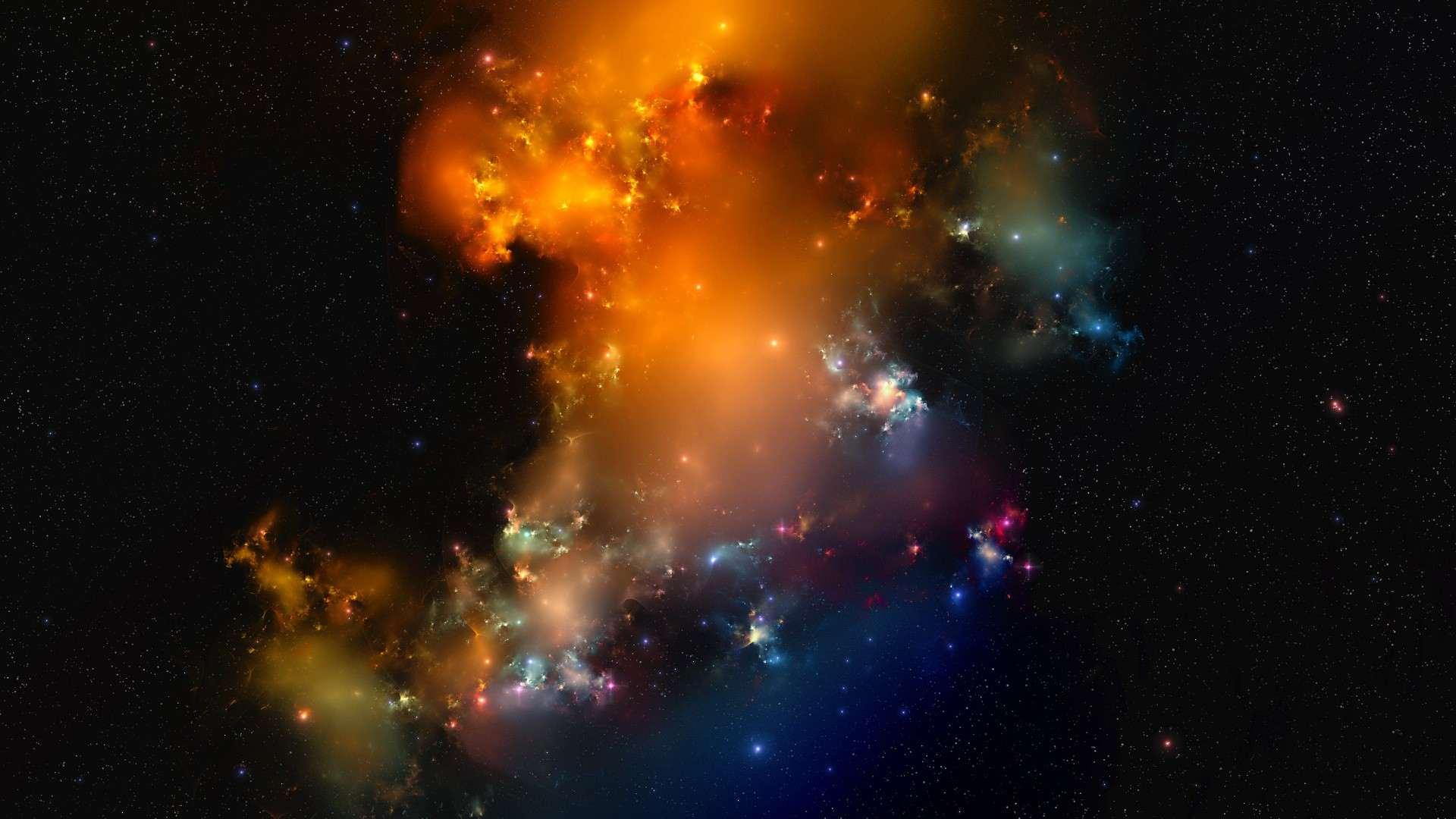
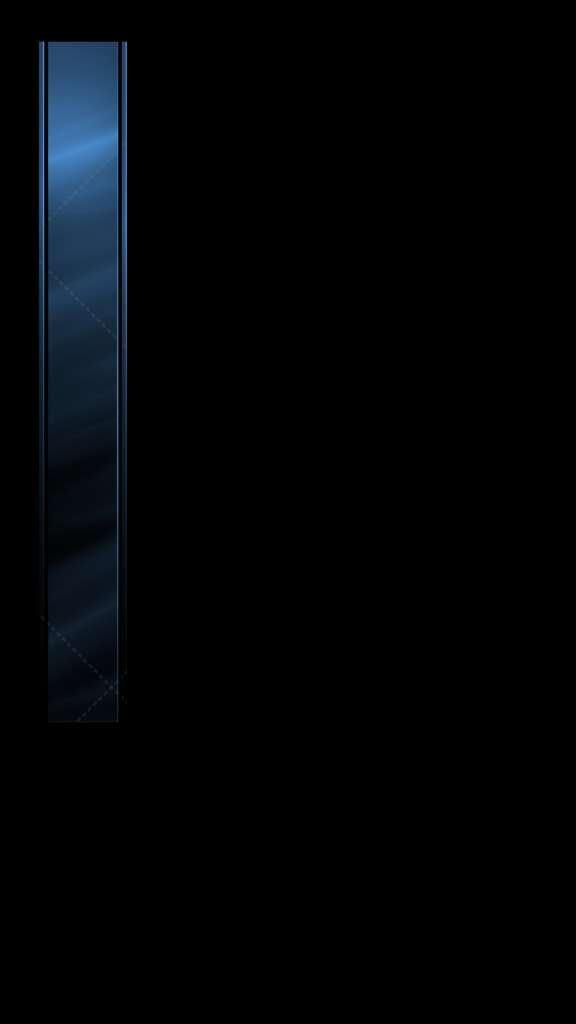







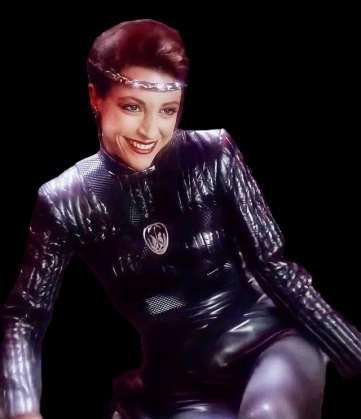
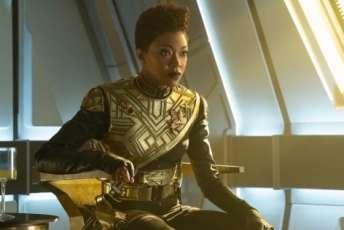


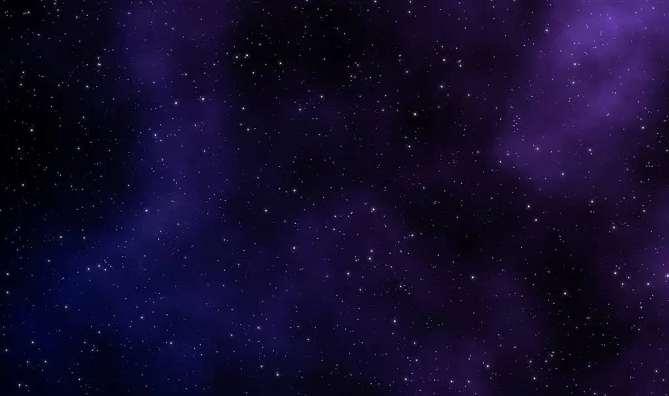


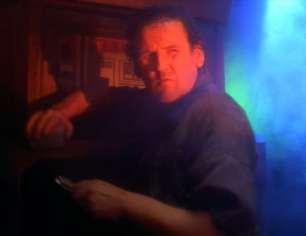






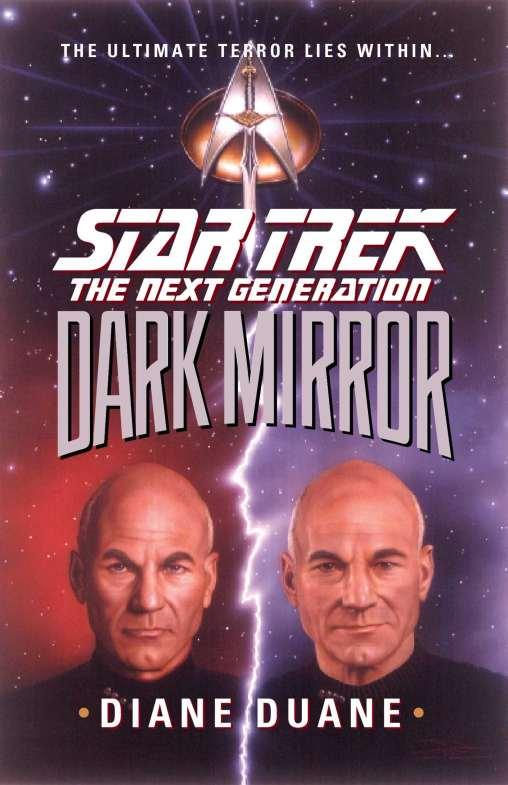
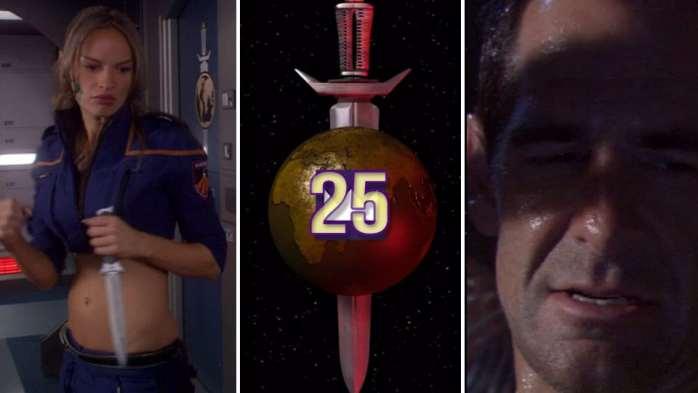


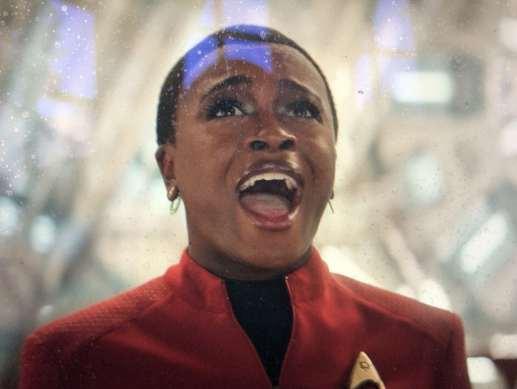




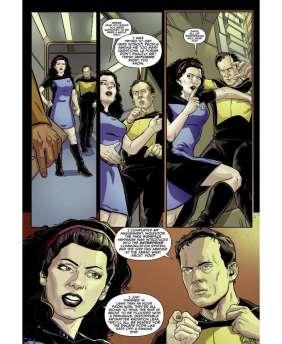


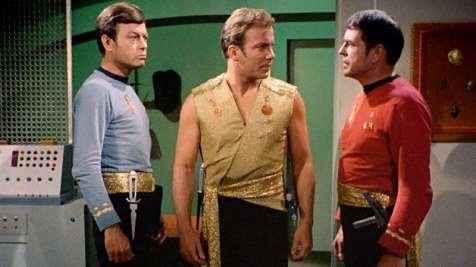


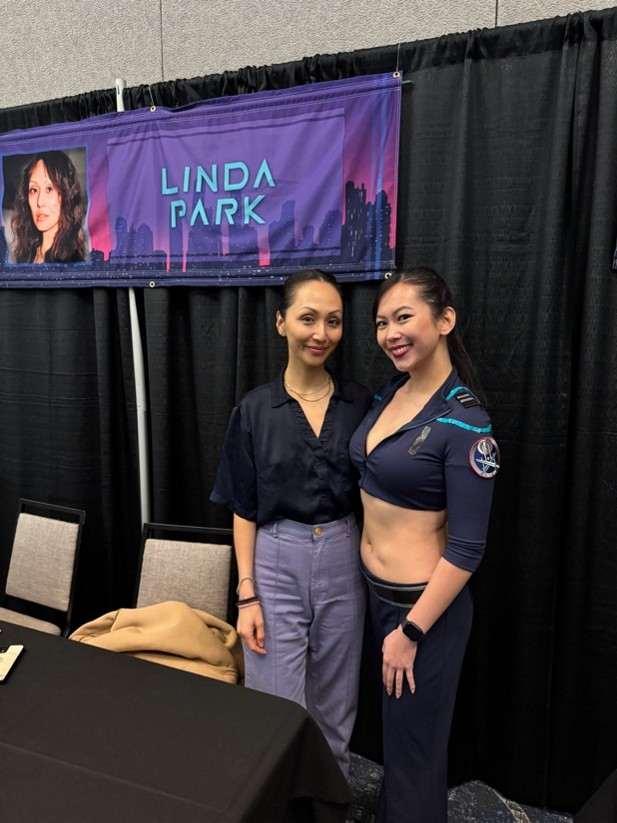








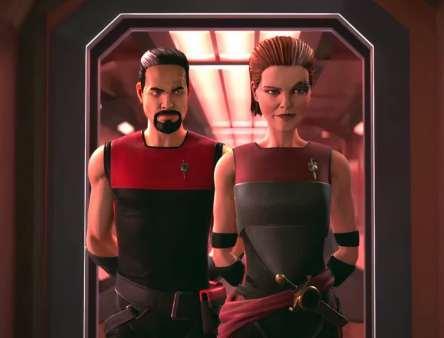

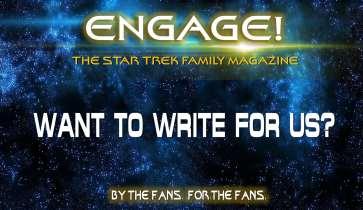

We are always looking for volunteer writers, editors and designers to join our staff! Send us an e-mail if you are interested in writing about your passion for Star Trek!





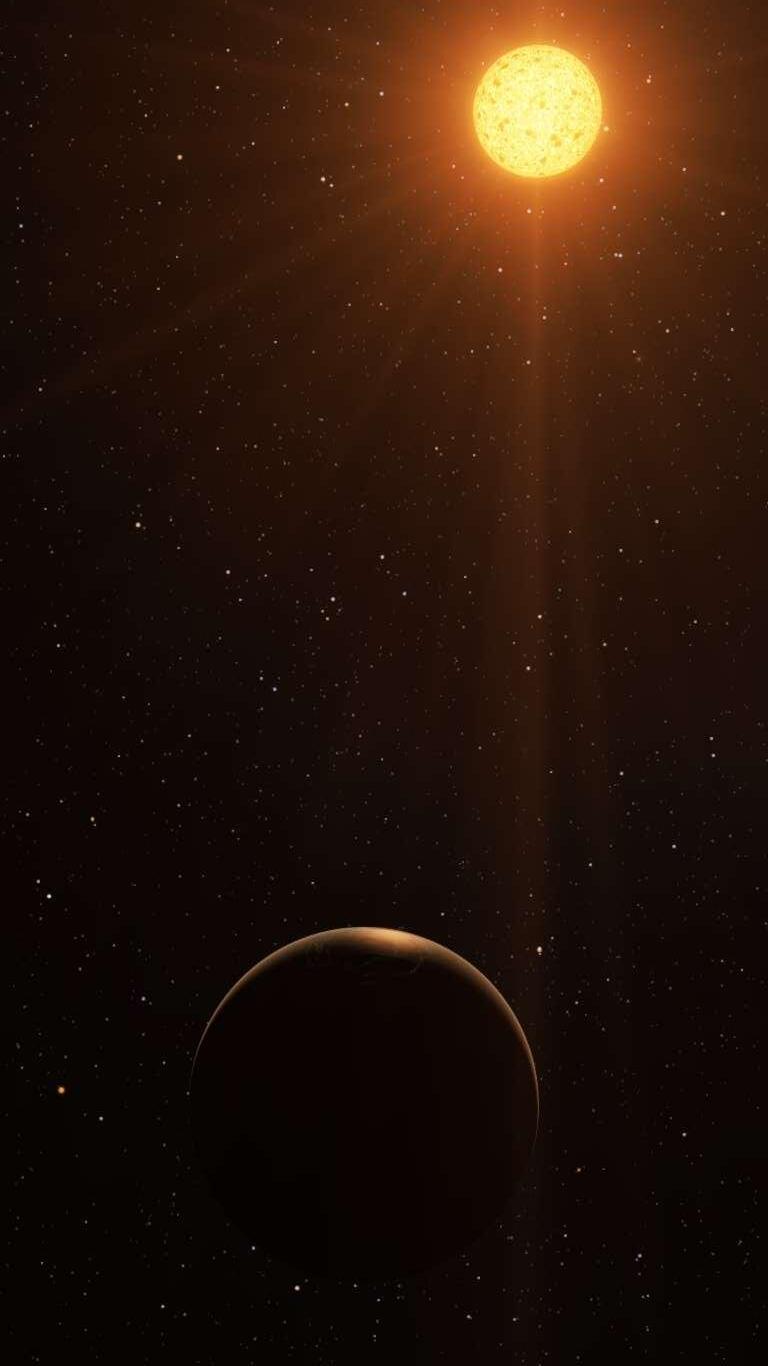
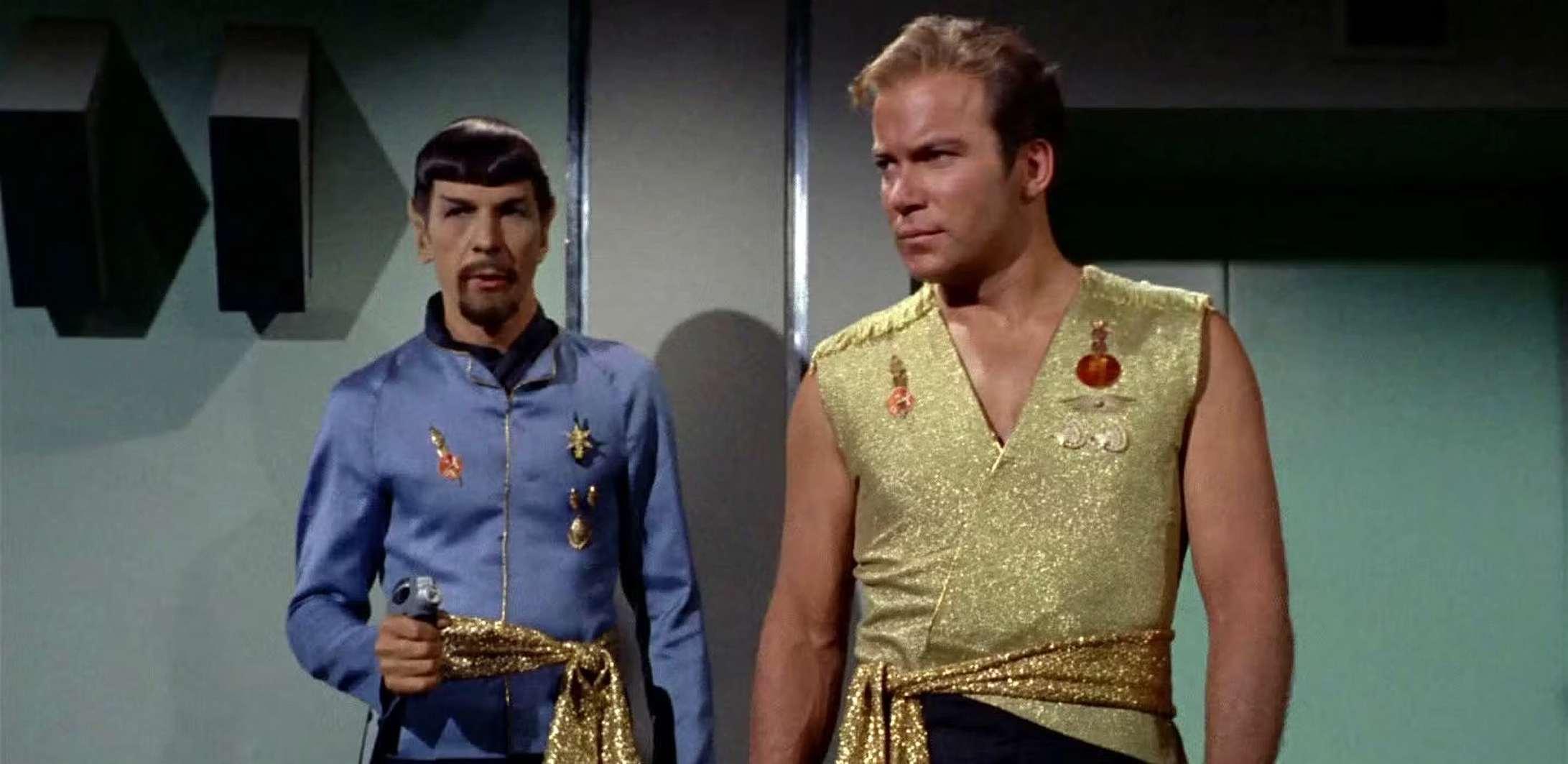



“Mirror, mirror on the wall, what was the original Terran Empire episode of themall?”
Okay, that was not the exact line from “Snow White,” but you get my meaning.
However, the question is legitimate. The story of the Terran Empire and the Mirror Universe originated with the original Star Trek series, Season Two, Episode Four entitled, “Mirror, Mirror.” This episode, written by Jerome Bixby, explored what would happen if a “door” were opened to an alternative universe where evil actions were the norm.
As we know, the idea of a Multiverse has been explored so many times in other Trek series, and nearly to death in the Marvel Cinematic Universe (MCU). Sometimes it has been done well in the MCU, like “Spider-Man: No Way Home” where they solved the question of why there were three versions of Spider-Man played by Tom Holland, Andrew Garfield, and Tobey Maguire and might I add it was done brilliantly. And other times in the MCU, it was a bit over the top, like in “Doctor Strange in the Multiverse of Madness,” as the name of the film implies.
However, this is a discussion of Trek and not the MCU, and it is about the first time we encounter the Mirror Universe. The concept of good versus evil has been examined in so many different ways. Same for the possibility of a multiverse. Yet, to melt these two concepts into one story/plotline was truly brilliant for its time.
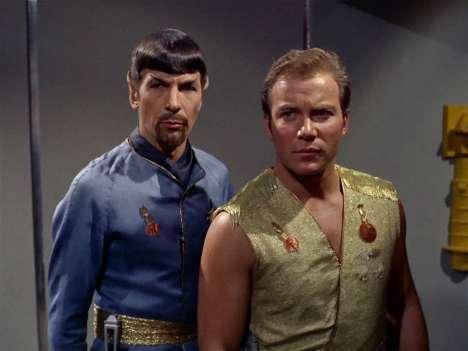
The concept and theory of a Multiverse goes back to (as I could find it on Google) Hugh Everett, who hypothesized its existence back in 1954. Was this the basis for the TOS episode? This I could not determine. And since I never earned a degree in quantum physics, I will not begin to explain the existence or non-existence of the Multiverse. However, since Star Trek is science fiction, we can apply the concept of a Multiverse into story-telling, and in the case of “Mirror, Mirror,” a really great story.
As with so many Star Trek episodes, it begins with a transporter malfunction. (And you wonder why Lt. Malcolm Reed from Star Trek: Enterprise was unwilling to use the transporter as stated in the pilot.) Returning from an away mission, Kirk, Uhura, Scotty and McCoy are inadvertently sent to the Mirror Universe during an ion storm (hey folks, check the weather reports before beaming), while their exact
duplicates are sent to the Prime Universe. Prime Kirk is surprised to find changes to what he thought was his USS Enterprise, now with the designation of ISS Enterprise. Simple, subtle changes appear on the sets for the ISS Enterprise, the most notable is the Terran Empire symbol of the Earth with a sword through it. The crew members’ uniforms are adorned with sashes, and they wear side arms as well. What was a bit strange was that when Prime Kirk and the landing party appear on the Terran Enterprise, they are dressed in the Terran uniforms. Interestingly, Nichelle Nichols' outfit allowed her belly button to be visible. When the series “I Dream of Jeannie” appeared on TV just a few years earlier, Barbara Eden’s outfit was designed so as not to allow her belly button to appear on TV. Yup, Trek broke all the rules.
Prime Kirk, Uhura, McCoy and Scotty are astonished by the cruelty of the crew; how torture is
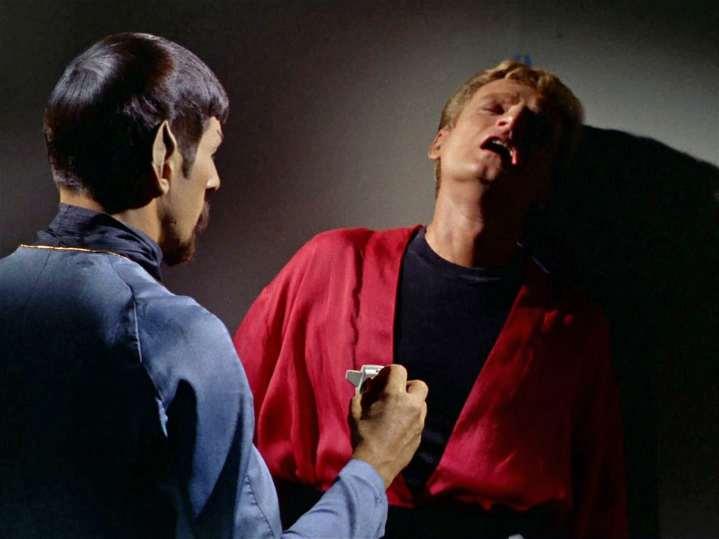
plest of errors. When Mr. Kyle is accused by Evil Spock of failing to perform his duties during the ion storm, Spock uses an “agonizer” on Kyle. We all know how Star Trek has predicted devices we use today, so I guess this was their version of a Taser?
As Prime Kirk and the others try to figure out how to return to their universe, we learn that assassination is the common method of promotion in the Terran Empire. Chekov attempts this and fails. When Kirk determines that they can devise a method to recreate the conditions to return to the Prime Universe, Scotty requests McCoy to assist him. We are treated with one of our favorite lines from Bones, “I’m a doctor, not an engineer.”
verse Enterprise, the Evil Kirk and his landing party members are not having such a fun time. They are captured by Prime Spock who puts them in the brig as he attempts to
William Shatner has so much fun playing the Evil Kirk, once again reprising when he was split into two separate Kirk’s in Season One, Episode Five “The Enemy Within.”
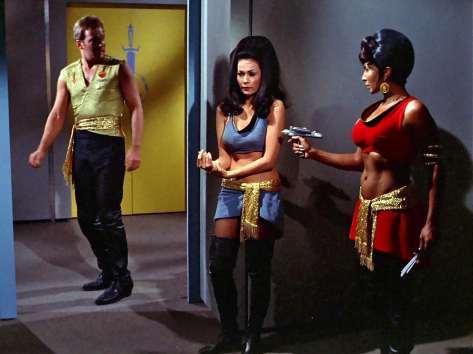
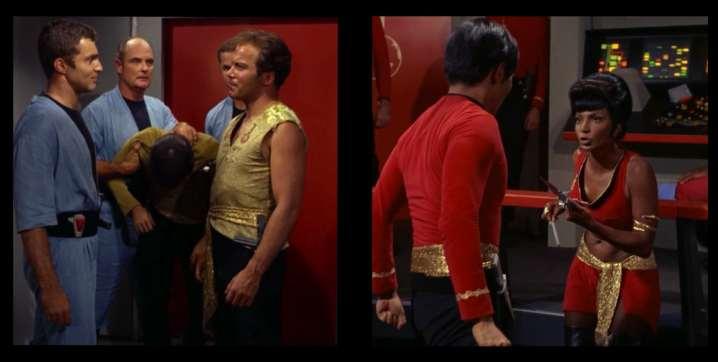
The episode takes place almost entirely in the Mirror Universe. Prime Kirk attempts to delay the destruction of the Halkans at his own peril, yet he does enjoy what his counterpart has: a captain’s woman named Marlena, and the power to kill anyone at any time with the Tantalus Field. As the landing party is rounded up in Sickbay, we get what is another favorite of TOS, the fight scene. Evil Spock is injured in the fight, and when Sulu arrives to kill Kirk, Marlena uses the Tantalus Field to “remove” the threat. In another TOS favorite, Evil Spock uses a “mind-meld” on McCoy to learn what has really happened and comes to their aid
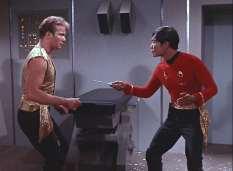
to run the transporter and send them home.
In closing, before Kirk and the landing party departed, Kirk gives his plea to Spock to begin a revolution to see the overthrow of the Terran Empire. Once back in the Prime Universe, in an ironic twist, the Prime Universe Marlena appears on the bridge — to the surprise of Scotty and Uhura while Kirk seems to think they can become “friends.” Yeah, right …
This would be the one and only appearance of the Mirror Universe in TOS. However, it opened up the storyline we get to witness again in other Trek series, like Deep Space Nine, Enterprise and often in Discovery as well. I think the appeal for the writers and actors to create a Mirror Universe is that they get to step out of their comfort zones. They can explore what an evil universe might be, either by playing the role of their own evil doppelgänger, or by seeing how their Prime Universe version must
navigate such a negative environment. Either way, we are witness to these episodes and the fun of the creativity that they can explore. Will we see another trip to the Terran Empire? Only time will tell. Strange New World’s third season is upon us and we know there will be two more seasons to follow. Since we have seen a TOS favorite with the Gorn reprising themselves in Strange NewWorlds, maybe we will see an Evil Pike sometime soon? As Mr. Spock would say, “there are always possibilities…”

STEPHEN MIRKIN: I first learned about science fiction the moment I was able to reach the on/off knob on my parents’ black-and-white TV set. Being born in 1956, I was there on Sept. 8, 1966 to watch the first episode of Star Trek. Since then, I have watched every TV series and every movie and I only look forward to the next great Star Trek moment.






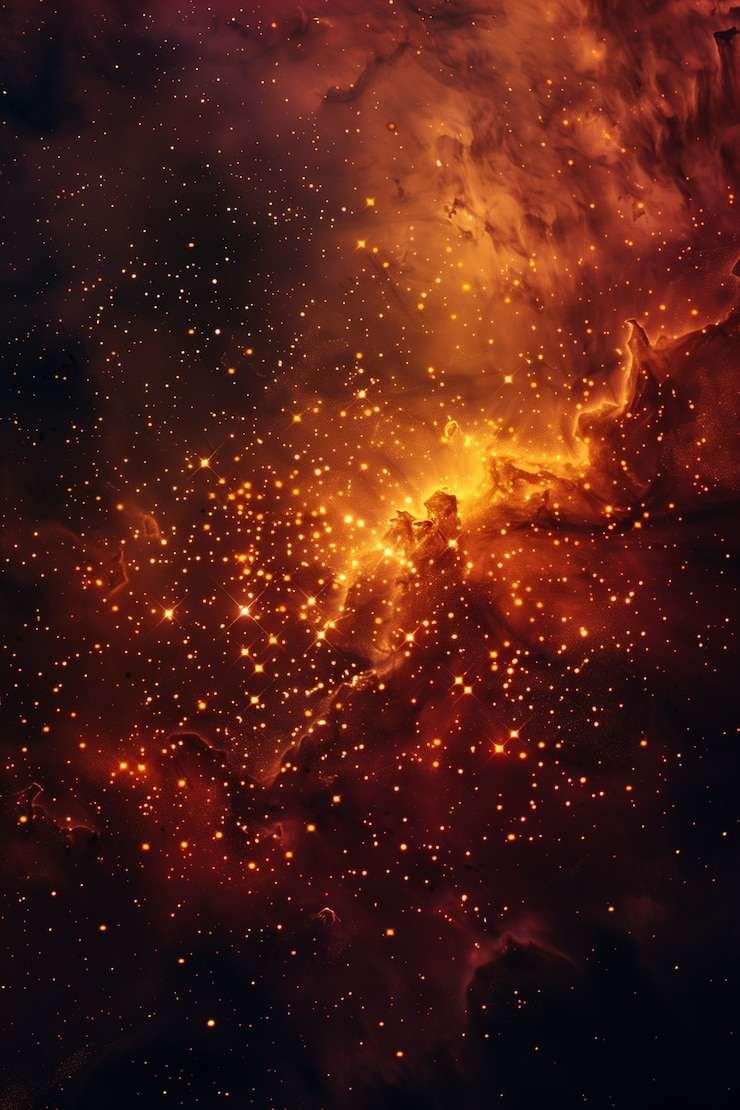
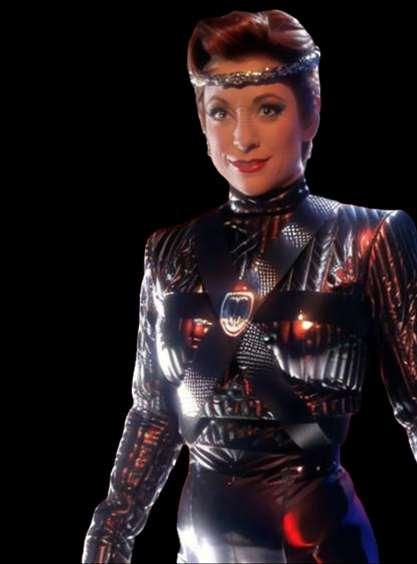
If you’ve ever met Nana Visitor, you know that she’s warm, engaging, and incredibly thoughtful pretty much diametrically opposed to the ruler of the Deep Space Nine mirror-verse Intendant Kira. She graciously spent some time with me over Zoom the other day, to dig deep into the evil version of the beloved Kira Nerys.
Nana is a woman who knows how to set the stage. She was sitting in a dark red chair with black satin draped artfully to form a background. Her hair, currently steel-grey, was in a classic swingy bob, and her nails were nearly the same color. She had just returned from a trip to Mexico when we talked.
Melissa Bartell (Melissa): Thank you so much for doing this. We’re focusing on the mirror universe in this issue so most of my questions will be about Intendant Kira, but I can’t ask about her without first talking about prime Kira. Can you give us a little background about how you got the part?
Nana Visitor (Nana): How I got the part was quite quickly after I got the copy - the scenes they wanted me to read. I called my manager, and I said, “I think you made a mistake. This is a man's role.”
And they said, “No, they want a woman.”
And I just - it was everything that I wasn't getting at the time. The nineties - at that time, it was usual for me to play someone in relation to someone else: someone's mother, someone's girlfriend, someone's wife.
And this was not that, although she was an alien, and I think that's what allowed me to fill her out so much. She was an alien. But she was also the most human character I ever played. She had the full spectrum of emotions, the ability to make mistakes and learn from them, to be unlikable, to form friendships slowly, and make mistakes in those.
It was very human, and Icouldn't believe my luck.
Melissa: Throughout the years, and still sometimes today, women, and especially women in Science Fiction, were often depicted in caring professions. They're doctors, they’re nurses, even when they're in military roles. They still tend to be written softer. Kira was very much not that. How did that make you feel? What was your favorite part about that?
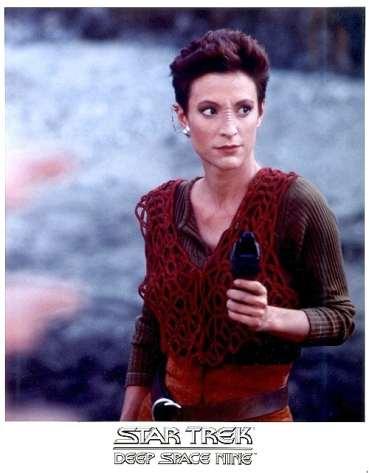
time, and a chance to drop this performative idea of what a woman is supposed to be, and just be who I was, and explore through storytelling ways of being that weren't really promoted in the nineties.
Don't forget the nineties were a time of all-new 24hour news channels and women were it was almost a sport to demonize them because that’s what sold at the time, that’s what was interesting to people. And that meant there would - it was the era of the b****, and I was called that very often at conventions.
“Oh, your character is just a b****. Oh, your character is just trying to be strong the way a man is strong and not the way a woman is strong. A woman is strong through XYZ.” Instead of giving me the whole alphabet. I mean, women aren't a monolith. There are women who are very strong in XYZ. but ABC exists too, so I got to examine all of it.
Melissa: When you got to the point where you were doing mirror episodes, and you got to play a completely different version of your character, with a different kind of power – can you compare and contrast Major Kira and Intendant Kira in that way?
Nana: Well, that's it. That's exactly the crux of it. How they use their power. What they saw. Communication between other beings. What their values were. So, it was a complete flip that actually helped me find Kira even stronger, because I had to critically think about it.
Instead of just feeling her I had to think about - Wait a minute. Where does she come from? Why is she this way? What are her values? And how does she want to walk in her world? And once I got that very straight, then I could flip it.
I like to approach characters psychologically so that there's a through line and a reason they act a certain way, the way they communicate with other beings, and Kira really saw purpose in her community, and spirituality. And she looked at opportunities to help her people.
The Intendant looked for opportunities to see weaknesses in other people, so that she could take advantage of them.
Melissa: Do you think her goal was just to increase her own power and influence, or do you think she had a greater purpose?
Nana: Yeah, no, I think she was a narcissist, and it was about power and a reflection back. I never thought she was really in love with Kira. I think she was fascinated by a mirror for herself. And it was almost like having an AI creation for her that looked just like her. That was fascinating.
Melissa: I recently watched the 2011 National Theatre production of Frankenstein where Benedict Cumberbatch and Johnny Lee Miller traded parts. One day one would be the creator and the other would be the monster, and the next day they’d flip. I feel like Kira and Intendant Kira meeting have a similar vibe. Do you agree?
Nana: Yes, yes, it's a flip, and it's also a fascination to see if you have a spectrum of being. What's on the other end? If you're on one end, what's on the other? And sliding between them.
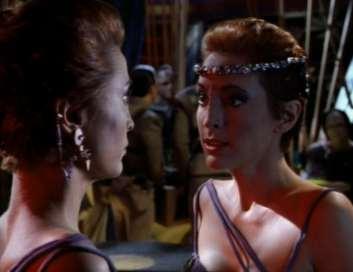
Melissa: Do you think that whether or not they would want to admit it, they're more similar than they think?
Nana: I think, in terms of possibly stubbornness. And maybe this belief that they have the right bead on things (musing.) Yes, I think Kira was very stubborn. I remember there was one episode where this creature attached itself and was growing exponentially. And you know right away her. Then her military mind is like, it's that creature or us. So, you kill it, kill it. And it was like, no, this is easy. You're going through all this. This is what you do. And it took her time to learn a fuller way of looking at things other than in a military us-and-them way.
Melissa: You mentioned that the way each of these women walk in the world was different. Now, I know you meant that metaphorically. But you come
from a dance background so can we talk for a moment about the literal physicality of each, and how you approached that?
Nana: Yes, so for Kira she was absolutely focused on what was in front of her, what she wanted to accomplish. She was not aware of herself physically.
I'd been on Broadway, and there was one show where I had to be like a showgirl in a showgirl costume. So, there's this total awareness in that situation of how you're walking, where your hands are, how your hips move through the space and your connection to who is watching you. And Kira never had that connection to who might be watching.
She didn't send a part of herself and connect and have an awareness. But the Intendant did. She had an awareness of her effect on other people and used it to her benefit. And it was totally performative, of course.
Melissa: Nana, I met you once very briefly years ago and noticed then, and even now through a video screen, you radiate joy. How do you take all of that positive energy and channel it into someone like the Intendant?
Nana: I mean, that's the fun of acting, and it's an energy play. In my life and with Kira, the connection with other people is so important to me and is joyous and that energy that comes out without expectation of anything in return.
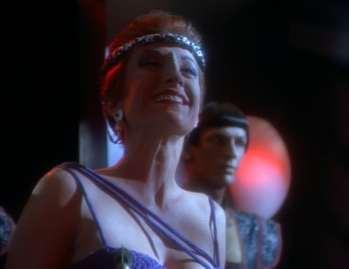
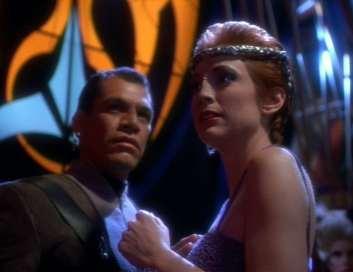
But with the Intendant, I think it was always transactional. So, I just take that energy. And it's a transactional thing where I am giving you my attention. Whereas the Intendant - whoever she's talking to, it’s a transaction: you get this, and I get something from you.
And that's fun to play with. But it’s the same energy.
Melissa: When I talked to John Billingsley about his traipse through the mirror world as Mirror Phlox, he said that the thing both versions of the character shared was that they were both gleeful, but that the darker version, was gleeful about mayhem and murder. Do you feel like there's some sort of underlying joy in the Intendant, even so?
Nana: Yes, I think there was joy in her power over people. And her perception. I think that she thought she was the most gorgeous person she had ever seen And the most powerful. And the most worthy of her position. I think she felt really good about herself.
Melissa (chuckling): She’d have to think that to wear that catsuit. I was asked to find out if it was uncomfortable.
Nana: Yes, it was terrible. It was basically rubber. It was a rubber suit. So, it was hot. I needed help getting out of it if I had to go to the bathroom. So, once I was in it was like, I'm just in this thing. What we didn't realize is that on hot days My sweat would

come through and make huge stains on my stomach, under my arms. So, they put a giant like 6-foot fan on the set so that I could stand in front of it in between takes so that the costume wasn't stained. And it squeaked. It was very, very noisy, so that meant that I always had to loop my dialogue.
Melissa: Did you mind that? Having to loop everything from those days?
Nana: Looping was fun in itself. It's fun to loop and go, “Ooh! How could I make this better? How could I affect my performance now that I see it?” So, even though it meant a trip on a day off to the sound stage, it was interesting to do that.
Melissa: And Star Trek does love its catsuits on women.
Nana: Oh yes!
Melissa: Aside from the importance of 6-foot fans, what have you learned from each character? From Major Kira and from Intendant Kira?
Nana: Oh, Kira taught me so much. Kira was a chance for me to be in the world as I was truly, and to develop. You know you drop a thought in your brain, and you do it over and over, you're making patterns. You're actually building synapses - ways of being, and Kira's desire for a better world, and to stand up for things that she believed in affected me absolutely. It changed who I was. It made me critically look at myself and wonder about myself.
And it's a very vulnerable thing that I learned from Kira to go, “I made a mistake.” And do it publicly and learn from it. And I've gotten really good at that because of Kira. Going, “Wait a minute. That's not
something I like that I did. Let me admit it and go back and shift where I am with it.” That's Kira.
From the Intendant I mean I already knew it: Performative sexuality is powerful and meaningless and not to be played with. To me, when it's used as a transactional tool, I think it is evil, personally.
I've told this story before. There was a director who was a really large man. Really, really large. And he was incredibly helpful to me as a young Actor.
I don't know how old. I was - early twenties - and I did a guest star role where I was supposed to be sexy and Come out of an elevator, and it was like, Well, you come out of an elevator so, You know, the door opened, and I came out and He went. “No, no, no, no! Watch me!”
And he came out of the elevator, and I swear to God it was Lauren Bacall. He transformed his body into this slinky woman and showed me how to run my hand down my leg and how to do something that people find alluring (even though she’s seated, Nana mimes doing just that), and so I did it. I copied him. I was a dancer. I knew how to do that. I knew how to copy movements. I think that was a lesson I took for the Intendant.
Personally, it doesn't work for me. If I need to use it in in acting, I will, but hopefully it's always with the purpose of going, “Do you see what she's doing?”
Melissa: Did you recognize that as being a problematic way to portray women of power THEN, or did you come to recognize it later? If presented with the same script today, would you have pushed for different choices from the writers, or made different acting choices?
Nana: No. The fact was that I saw her as a valuelight creature who manipulated with awareness. It fit into her whole dynamic.
Melissa: Is there any story that you would have liked to see with regard to the mirror universe that we didn’t get to -?
Nana (interrupting – excited): Yes!
Melissa (laughing): Okay – tell me!
Nana: Yes, I would have loved the storyline, and I would have loved to play the complexity of the fact that the Mirror Universe stole Kira, and it was the Intendant on the station for a certain amount of time during the war.
Melissa: Ooh!
Nana: I would have loved that and for no one to have known it until later. And then you go back and look at the scenes and go. “Ah, yes, that was not Kira. And here was the tell, and here was the tell.” I would have loved to been able to do little Easter eggs like that in a scene.
Melissa: Ah! The physicality of that would have been so much fun!
Nana: Right, catching her, catching herself and trying to find the Kira in her.
Melissa: In the documentary, What We Leave Behind, Ira Stephen Behr said that they envisioned future Kira becoming Kai. Do you think Intendant Kira would have ever become Kai, or did she not need that? She didn't seem super spiritually connected.
Nana: No, no, I know I don't think so. I think she would have continued to try to conquer all the world
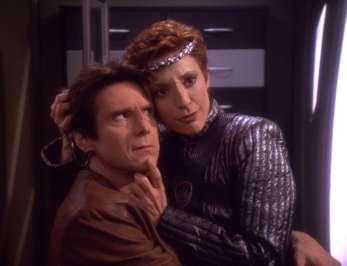
she could.

Melissa: For a lot of young people growing up, seeing Kira - and especially Intendant Kira - was formative in exploring their own sexuality and gender identity. How does that knowledge impact you?
Nana: That’s a complicated one since I have feelings about her performative nature. But for Kira it's very clear that I am hugely connected with the idea that she was simply human, she was just who she was, and that is on offer for everyone.
Melissa: Is there anything that you would have liked to see along that line? Boundaries being pushed if the show was made today?
Nana: Well, I think that Star Trek has done that work. They continue to do that work with my character.
Really as an elder, now, what interests me is opening the perception of what people my age have to offer. I want that to be there. The second thing that is so important to me is mentorship of young people, and I would love to see Kira pushing boundaries of what's expected from someone at her age - at my age.
Melissa: I know you already did a whole live-stream with us about your book, Open a Channel: A Woman’s Trek, but I want to say as fan and as someone who reviews books, that I loved the honesty of it, and I loved the presentation – it could have been a
coffee-table fluff piece and instead it was something incredibly meaningful. Can you talk about what led you to the project and what the response has been?
Nana: Well, Ben Robinson, my editor, approached me about it. He was like, “I think this book should be done, but it should be done by a woman. Would you like to write it?”
It was supposed to be a paragraph of each character with an artist doing a rendition, so that it was just like this character's archetype was this, and so on. That was the concept of the book, and to his great credit I went. “Yes, I'd like to do that. But how about we talk about the, the, what the culture did and what we did for the culture, what the impact was both ways of the culture of the decades, and how women were perceived?”
And he encouraged me the whole time to make it very personal, to come from how I saw it because I think I wanted to do it as more of a project That I had researched solely, and he was like, “No, no, no, put yourself into it.”

He'd send it back. “Put yourself into it.” And that felt almost too selfish to me, but once I did it. I realized that there are men, and there are women who have come up to me who said, “Yes, I experienced that. Yes, I've seen that, too.”
And I saw the huge benefit. And I am. It's weird that it's this coffee table book with not coffee table writing in it. But I also think that's kind of funky and great, too. And it offers you. I mean, there are so many women's pictures in there that you can get
signed. Bring it to a con. Oh, my God! It can be filled! And I love that idea.
Melissa: Is there anyone you couldn’t include that you would have liked to?
Nana: Oh, my God! So many! I wanted everyone in the book. But especially, the older women that I didn't get to talk to. I wish I could have. – the ones that were gone. But the guest stars that I did get a chance to speak to were: un believable.
I mean, you can see who's missing in the book. Sometimes agents just go. Oh, another Star Trek book! No, and don't ever tell them. Also, there are some people who may have gone, “What’s this book going to be? Is it like a hit list? Is it a me, too thing? Who knows what she's doing?”
And I understand that, too. But there was a plethora of women that I wished I'd had a chance to speak to.
Melissa: I feel like it should be required reading. It’s a beautiful book.
Nana: I'm shocked at how many men have read it and have gone, “I didn't see it that way. I didn't get it.” And it's like just one man saying that – it’s Worth everything, worth everything.
Melissa: I think you’ll find that these experiences aren’t limited just to Star Trek either. They’re universal.
Nana: Yes, and what Mike McMahon taught me. –what his whole show Lower Decks was about was that If you love a system, Always question, it.
Melissa: I really enjoyed that show. I think you have to love something to be able to do deep dives but also be irreverent the way they were.
Nana: You do. They got that so right. And they did so much that was, it was filled from top to bottom with people who loved Star Trek. I’m not really an animation fan, other than some Japanese films like Spirited Away, but this was so purposeful, it was really great. It was another look at Starfleet. And a necessary one.
After all, Starfleet's a system.
Catch Nana at Galaxy Con: New Orleans in July, Trek to Las Vegas in August, and other cons later this year. You can also find her on social media: : BlueSky | Instagram

MELISSA A. BARTELL: Melissa A. Bartell is a writer, podcaster, voice actor, improviser and kayak junkie currently living on Florida's Nature Coast. She has one husband, two dogs and only one kayak (so far). Find her at MissMeliss.com or on social media:
Bluesky | Facebook | Instagram | Mastodon
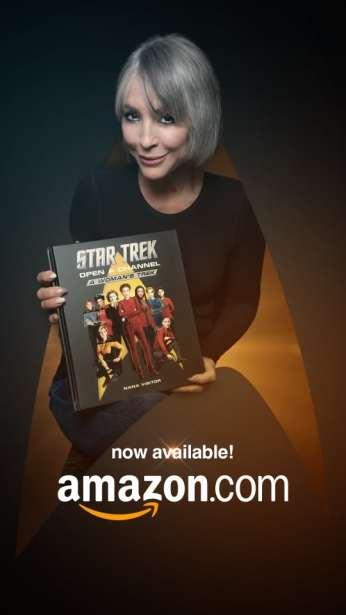

Click this graphic to buy your copy!




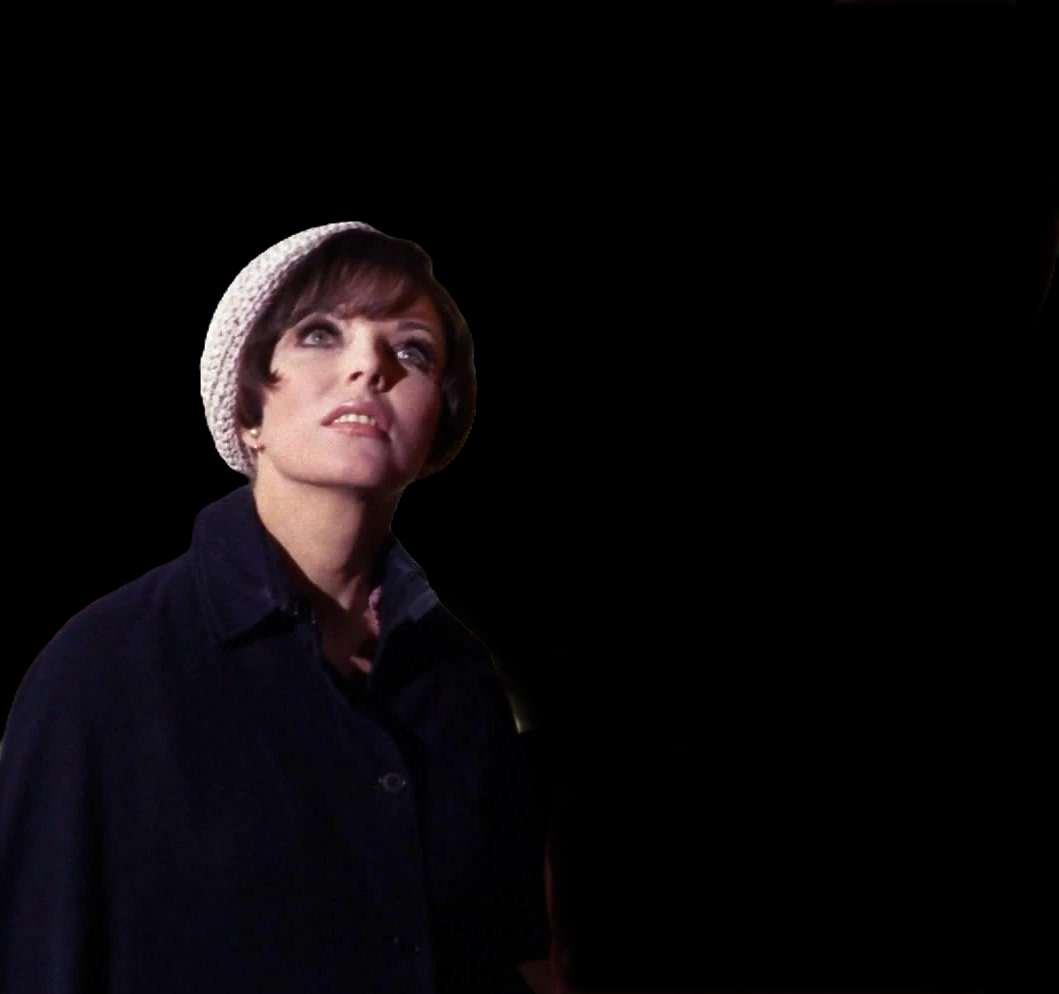
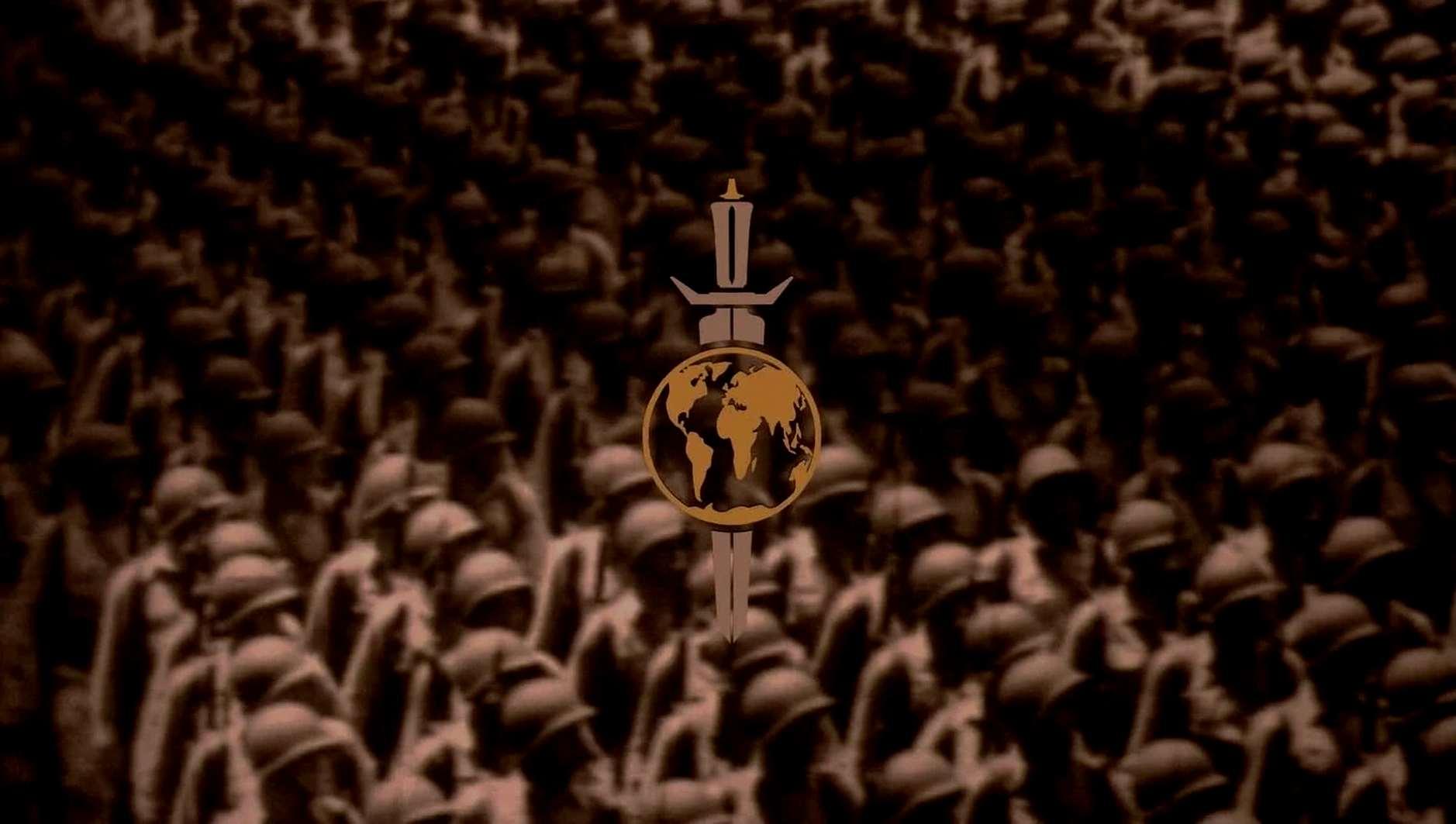


What can happen in a split second? Nearly anything. And using the idea of a split second, what if it could split one universe into two separate and distinctly different universes? That is what might have occurred in the creation of the Mirror Universe and the Terran Empire.
Let us return to that specific moment in time. It is when Kirk, Spock and McCoy are transported back in time by The Guardian, when the timeline was distorted by allowing Edith Keeler to live and thus causing the end of the Prime Universe timeline. Yet, Kirk and Spock allowed her death to happen and all was good once again…except for Kirk’s loss of Edith.
Now, let us propose that when the timeline was altered, in that “split second,” a split in the timeline was created and all the negative energy was transformed into the Mirror Universe. This would have allowed all the positive energy to continue on in the Prime Universe. This is only a theory. Yet, let us look at how events from the Prime Universe would have occurred in the Mirror Universe starting with Edith Keeler.
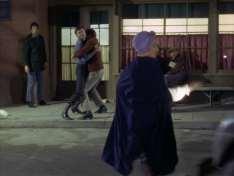
Edith, after the universe had split, did not encounter
McCoy, Kirk, or Spock in the Mirror Universe. Yet the truck that was to have hit and killed her would instead miss her by inches. She proclaimed that she was a prophet, endowed with special powers that prevented her death. People at the soup kitchen propelled this created story to the annals of the President of the United States. She informed President Rosevelt that this divine power told her that if the United States would seek an alliance with Japan and Germany, then our country would become an empire that would last for a thousand years. And so, the Axis of Evil, which now included the USA, would become this new empire, the Terran Empire.
Years went by and in the 1950’s a Vulcan survey ship crash landed on Earth. Of the three crew members who survived the crash, only two returned with a rescue mission, the one who remained was Mestral. He yearned for more freedom from the dull logic of the Vulcans and remained behind. Mestral learned about the genetic testing work being done by German doctor Josef Mengele (A real person, you can Google it and he was evil). and offered his help in creating a super race of humans. Khan Noonian Singh would lead this super race. Khan, along with others like himself, attempted to overthrow the “weak” leaders of the Terran Empire. Ultimately, Khan and his followers were captured, put into a sleeper ship, and blasted off into deep space.
As the decades passed, Mestral warned that one day, the Vulcans would return and they
should be prepared for their arrival. With Mestral’s assistance, Zefram Cochrane was able to develop warp drive technology and for his reward, Mestral was killed. Cochrane did not want anyone to know he did not design the warp
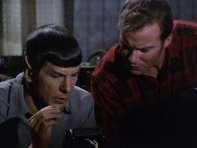
DEATH AS A FOCAL POINT
In the episode “City On The Edge of Forever”, Spock is able to determine that Edith Keeler’s death was the focal point which changed all of history.

Had she lived, she would have founded the peace movement that would have delayed the United States entry into World War II. The inevitable conclusion would be that Germany would defeat the world, thus creating an evil empire that could have been the genesis for the Terran Empire.
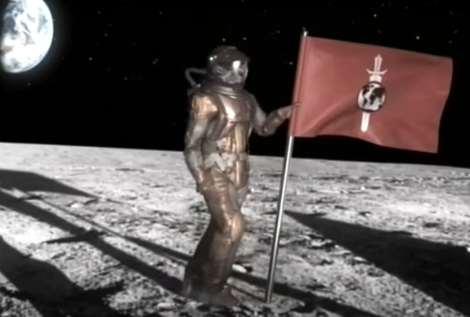
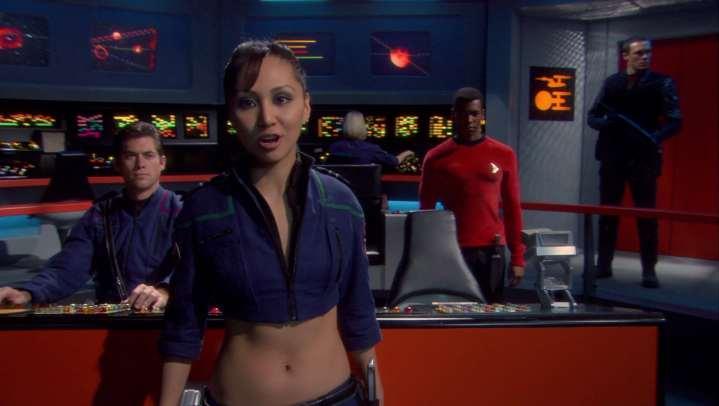
engine by himself. When Cochran launched his craft “The Phoenix”, it attracted the attention of the Vulcans who returned back to Earth. This time, Cochran and his followers attacked the Vulcans and took their technology to complete man’s development of a more powerful warp drive system. With the help of the world renowned physicist Henry Archer and the commandeered Vulcan technology, the ISS Enterprise was launched in the twenty second
century with a warp five engine. Henry’s only request from Cochrane was to allow his son, Jonathan Archer, to be made its captain.
The ISS Enterprise mission was to attack and take over the various planets and societies that would not fall in line with the Terran Empires plans. However, those plans did not include finding a Constitution class starship, the USS Defiant from the Prime Universe. It is commandeered by
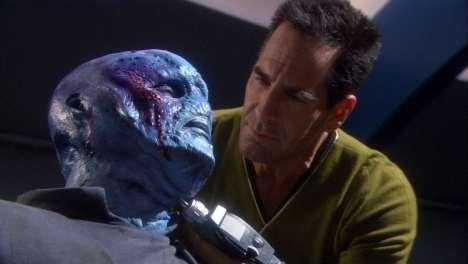
Hoshi who proclaims herself Empress Sato. She is overthrown by others leading up to the reign of Emperor Philippa Georgiou in the 23rd century.
In that time, technology from the Prime Universe Defiant is used to build a more powerful Enterprise. Its first captain was Robert April who was killed and replaced by the next captain, Christoper Pike. His time in the center seat was taken over by James Tiberius Kirk who tortures,
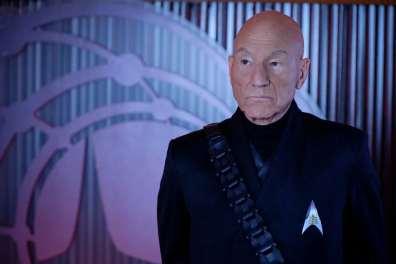

disfigures, and cripples Pike. Kirk is the most callous, egotistical, and womanizing of all the captains of this and the next three versions of the Enterprise.
The grandest version of the Enterprise is the model “D,” captained by the evil Jean-Luc Picard. Being a lover of history, he had his engineering team build a working guillotine so that he and his crew could enjoy the beheadings of those that would stand in their way.
As the reign of the Terran Empire spread out into the Alpha Quadrant of the galaxy, deep space outposts were built and placed at various locations to protect against any who would challenge the empire. Those outposts were known as Death Stations, numbers one to nine, with DS9 being commanded by Benjamin Sisko. A person so vile, he used his prized Willie Mays baseball bat to beat to death anyone or anything that stood in his way.
Yet, the Terran Empire was
not satisfied in controlling the Alpha Quadrant and using technology from defeated planets, the greatest mission was planned for the newest starship. Using wormhole technology, the ISS Voyager was sent on a mission to explore and make way the conquering of the Delta Quadrant. With Captain Janeway at the command, a woman so feared, she was known to drink her coffee at 100 degree Celsius. She felt that if it does not burn, it was too weak for her. Her’s was a suicide mission, but she was fine with death if it made the empire stronger.
What was next in the plans for the Terran Empire? A name change to the Galactic Empire. And those plans included traveling out past the end of the known galaxy and to conquer the next and the next and the next galaxy until they could be renamed the Universal Empire!
The bottom line of this whole speculative piece is that the point in time which set the Mirror
Universe on it’s own was Edith Keeler and the truck. If Kirk or McCoy had intervened to save Edith’s life, she would have gone on to lay the groundwork for evil to conquer our world (and by extension, galaxy). Were Edith’s pacifist goals a worthy cause? Sure they were. Peace is always a good thing. But as Spock explained in “The City on the Edge of Forever” - they were noble goals that came at the wrong time.
So, as Spock so dispassionately stated: Edith Keeler MUST die.

STEPHEN MIRKIN: I first learned about science fiction the moment I was able to reach the on/off knob on my parents’ black-and-white TV set. Being born in 1956, I was there on Sept. 8, 1966 to watch the first episode of Star Trek. Since then, I have watched every TV series and every movie and I only look forward to the next great Star Trek moment.





Whenever I reflect on the value of Star Trek or the reasons behind my love for the franchise, I always come back to the joy of exploring complex moral and ethical issues. Star Trek offers more than sheer entertainment. It’s not unusual for popular culture to challenge the status quo or warn us about the consequences of our actions. When done well, especially in science fiction, popular culture can lead us to think deeply about social issues while still enjoying the story being told. That’s certainly true of the Mirror Universe episodes across the Star Trek franchise. These stories ask us to consider morality, ethics and the ways our environment shapes who we are. Ultimately, they remind us how fragile our existence is.
Integrating quantum physics theories that postulate the existence of alternate universes, Star Trek: The Original Series episode “Mirror, Mirror” introduces a parallel universe where the ideals of the Federation were replaced by those of the Terran Empire. Though a departure from the typical storyline, the episode offers sharp commentary on the nature of good and evil, the fragility of moral order, and the ethical consequences of power, ambition and identity. All of this unfolded within a setting that rewards those who wield power to get their way.
In the Terran Empire, power is not merely a tool, it is the ultimate goal and moral referee. Success and survival depend on one’s ability to manipulate, deceive and wield violence. Ethical considerations take a back seat to

expedience, exposing the dangers of unchecked power. Mirror Kirk, Mirror Kira and others illustrate how easily leadership can be corrupted in a world where might makes right. The Mirror Universe reveals that when systems of justice and accountability collapse, even the most principled individuals can be seduced or coerced into moral compromise. Sound familiar?
At the heart of the Mirror Universe lies the enduring debate between determinism and free will. Are individuals inherently moral or immoral, or are they shaped by their environments and social systems? As a sociologist, I tend to favor the latter. The transformation of familiar characters into their cold-blooded counterparts suggests a deterministic worldview. Mirror Kirk wasn born bad; he was a product of an environment that rewards dominance over benevolence. These choices highlight the moral weight of circumstance and the fragile nature of morality.
The Mirror Universe is more than a playground for darker, more ruthless versions of beloved characters, it is a cautionary tale. It asks: What if everything we strive to be– just, peaceful, enlightened–had turned out differently?’ John Greenleaf Whittier’s line, “For of all sad words of tongue and pen, the saddest are these: It might have been,” captures the underlying theme of the Mirror Universe. Star Trek’s “might have been,” a distorted reflection of its moral aspirations. The Mirror Universe embodies a sense of lost potential. How might Mirror Spock have

been different if raised in a just society? What was lost when the idealism of the Federation gave way to the imperial ambitions of the Terran Empire? These questions echo the sorrow in Whittier’s words, underscoring the tragedy of lost moral integrity and the corruption of noble ideals.
In “Mirror, Mirror,” Captain Kirk challenged Mirror Spock to consider facilitating change. He planted the seed of rebellion against the Empire, stating: “The illogic of waste, Mister Spock. The waste of lives, potential, resources, time. I submit to you that your Empire is illogical because it cannot endure. I submit that you are illogical to be a willing part of it.” Spock listened and eventually acted. This suggested that even in the Mirror Universe, free will remained a possibility. Similarly, in Star Trek: Deep Space Nine, the Mirror Universe arcs depicted individuals striving to overthrow totalitarian rule and reclaim a sense of freedom and security.

This interplay between freedom and oppression invites reflection, especially for fans living through the late 20th and early
21st centuries. Societal structures, laws and norms play a significant role in shaping moral development. The Mirror Universe allowed Star Trek to explore what happens when those foundations are reversed or corrupted. It serves as a warning that moral environments matter deeply and that vigilance is necessary to prevent a slide into authoritarianism or patrimonialism. This became especially evident in Deep Space Nine, where once-oppressed peoples had turned Terrans into slaves. Like Europeans who came to the Americas seeking religious freedom only to persecute others for their beliefs, they became what they had once rebelled against. The extreme conditions of the Mirror Universe raise the specter of moral fatalism: Can one remain good in a universe where goodness is systematically punished?
The Mirror Universe challenges us to consider not only what characters do, but also the systems they support or undermine. Its allure lies in raw, unchecked power dynamics, and the moral cost of wielding such power. The emotional and ethical weight of “it might have been” also echoes in Richard Matheson’s novel I Am Legend. In this postapocalyptic tale, protagonist Robert Neville is the last uninfected human in a world ravaged by plague. Initially cast as the hero, Neville eventually discovers that the infected have built their own society and view him as a remnant of a bygone era and a threat to their existence. The shock of this realization highlights the dangers of moral absolutism and the
unsettling ease with which the roles of hero and villain can shift depending on perspective.
In the Mirror Universe, this reversal is pervasive. The Federation’s mission of exploration and peace is replaced by the Terran Empire’s drive for domination. Yet the Terrans do not view themselves as villains. They see their actions not only as necessary but as righteous in their struggle for survival and supremacy. This moral ambiguity underscores a central theme of shared by both I Am Legend and the Mirror Universe: the importance of perspective in ethical judgment. When good becomes evil and evil good, morality itself becomes a mirror, not reflecting truth, but refracting the context in which it exists.
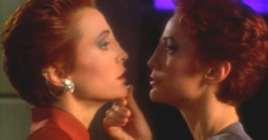
The existence of mirror counterparts raises profound questions about identity, environment and moral responsibility. If our circumstances were different, how would we change? Choice is shaped by time and space. Are we inherently moral beings, or simply products of our environments? This tension plays out in episodes where Prime Universe characters confront their Mirror Universe selves. These encounters compel both characters and us to wrestle with questions of identity. Sisko’s interactions with his mirror counterpart in Deep Space Nine sug-
gest even deeply held values can be tested by situational pressures. Yet, they also affirm the possibility of morality, even within systems designed to suppress it.
A critical and disturbing aspect of the Mirror Universe is not just its divergence from the Prime Universe’s values, but its structural similarity. The same characters exist, perform similar roles, and often possess the same intelligence and skills. Yet their morals are distorted, their potential misdirected. Spock remains logical, but he applies logic to uphold oppression. Kirk is still a capable leader, but he leads through intimidation and assassination. These mirrored versions compel us to confront the uncomfortable truth that the line between virtue and corruption may be thinner than we would like to believe. Attributes central to the Federation, compassion, diplomacy and egalitarianism, are scorned in the Mirror Universe, where betrayal, cruelty and authoritarian control are the norm.

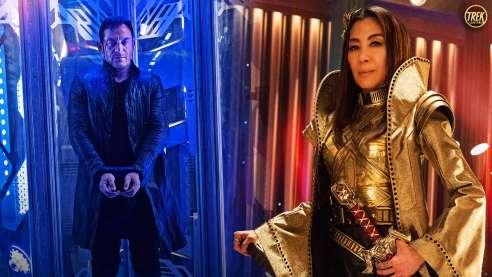
The Mirror Universe continues to explore the relationship between context and identity.
What does it mean to be “yourself” when another version of you makes different choices? If who we are depends on circumstance, then identity becomes fluid and carries with it a moral responsibility to shape our environment and resist what might compromise our integrity. This idea is reinforced by the moments of moral clarity that occur within the Mirror Universe. In Deep Space Nine, efforts by some characters to overthrow the Terran Empire and build more equitable systems suggest that even in darkness, light can endure. These moments affirm the core StarTrek spirit that moral progress is possible, but only through courage, sacrifice and vision. In other words: AdAstraPerAspera. This idea also resonates with Whittier’s lament: “It might have been.” The Mirror Universe reveals not only what could have gone wrong, but who we all might have become under different circumstances. The quote underscores the tragedy of wasted potential, lives shaped by injustice and virtues left unrealized. The
Mirror Universe demonstrates the consequences of failed cultural development.
Acknowledging this forces us into deeper moral selfexamination. In Deep Space Nine, several Mirror Universe episodes provide more backstory on characters and the history of the Mirror Universe itself. Mirror Kira and Mirror Jennifer Sisko display moments of kindness, suggesting that virtue can survive even in the harshest of environments. This echoes Matheson’s portrayal of Neville, who, despite his violent actions, was ultimately humanized through his remorse and newfound understanding. These portrayals invite us to consider the capacity for redemption and the enduring potential for good.
Yet the Mirror Universe also warns against complacency. These episodes demonstrate that even institutions as noble as the Federation are not immune to corruption. The very existence of the Mirror Universe implies that the best intentions can be subverted under the wrong conditions. It’s a cautionary tale about
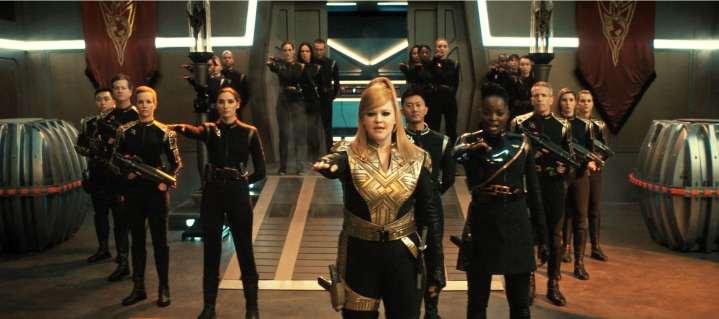
the fragility of ethical systems and the need to maintain them. The lesson extends beyond individual morality to the broader structures that support and sustain ethical behavior.
In I Am Legend, the collapse of society gives rise to a new moral order, one in which Neville becomes expendable. Similarly, in the Mirror Universe, the fall of Federation ideals, as Emperor Georgiou stated in the episode “Vaulting Ambition,” paves the way for the rise of the Terran Empire. Both narratives highlight the consequences of societal breakdown and the reconfiguration of moral norms. They challenge us to reflect on how quickly the foundations of morality can shift and how difficult it becomes to distinguish hero from villain afterward.
Whittier’s “it might have been” takes on added significance in light of these story arcs. He was not simply lamenting lost potential, he was warning us about the consequences of paths not taken. The Mirror Universe is a powerful
lesson in how easily we can slip into barbarism. It reminds us that moral progress is neither linear nor guaranteed. Sustaining it requires vigilance, empathy and reflection. The Mirror Universe is not just a dark reflection of Star Trek characters, it is a dark mirror of ourselves, forcing us to confront uncomfortable truths about the human condition.
The blending of Whittier’s lament, Matheson’s dystopia and Star Trek’s principles creates a powerful triad of moral reflection. Each suggests that the saddest truths are not the presence of evil, but the loss of goodness. The Mirror Universe is compelling not because it is evil, but because it is familiar. Its characters are not monsters; they are versions of ourselves shaped by different choices. This recognition is both disturbing and enlightening.
The Mirror Universe in Star Trek explores enduring moral and ethical issues. It examines how environment shapes behavior, how perspective defines morality, and how societal decay corrodes
ideals. When coupled with Whittier’s lament and Matheson’s warning, the Mirror Universe makes a profound statement on human nature: morality is not guaranteed, it is a choice. A fragile construct, it must be nurtured and defended. In the end, the greatest tragedy is not what is, but what might have been. By showing us the worst of ourselves, Star Trek reminds us of the best we might still become.
But only if we choose.
Only if we act.

DAVID G. LOCONTO: David G. LoConto is a Professor of Sociology at New Mexico State University, specializing in collective identity, fandom and social movements. More importantly, he’s been a fan of Star Trek since Sept. 8, 1966 when he watched the first episode with his parents.


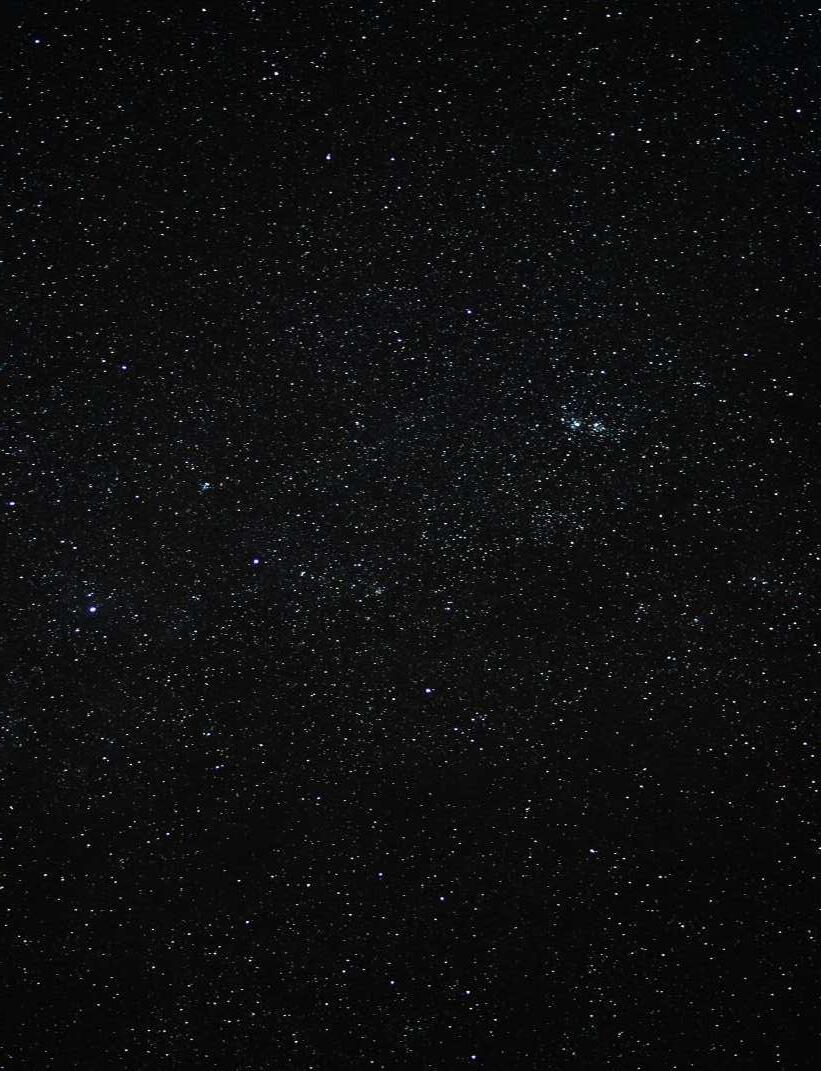
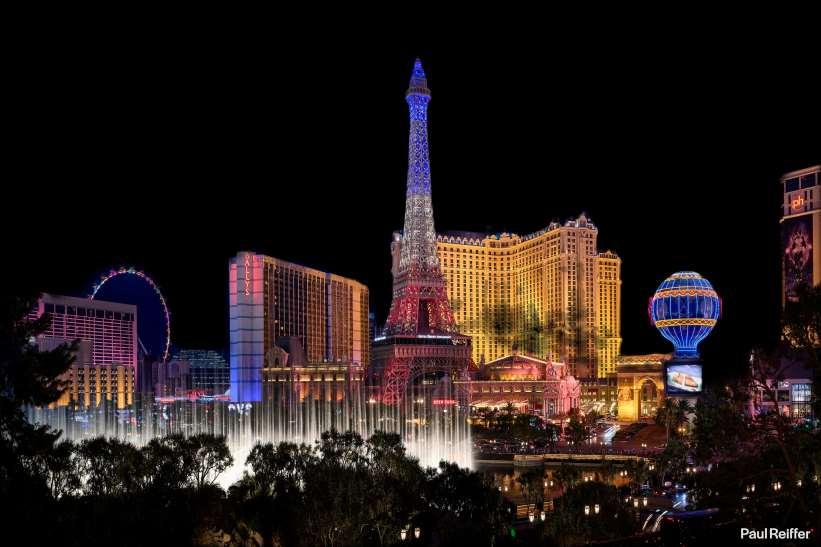



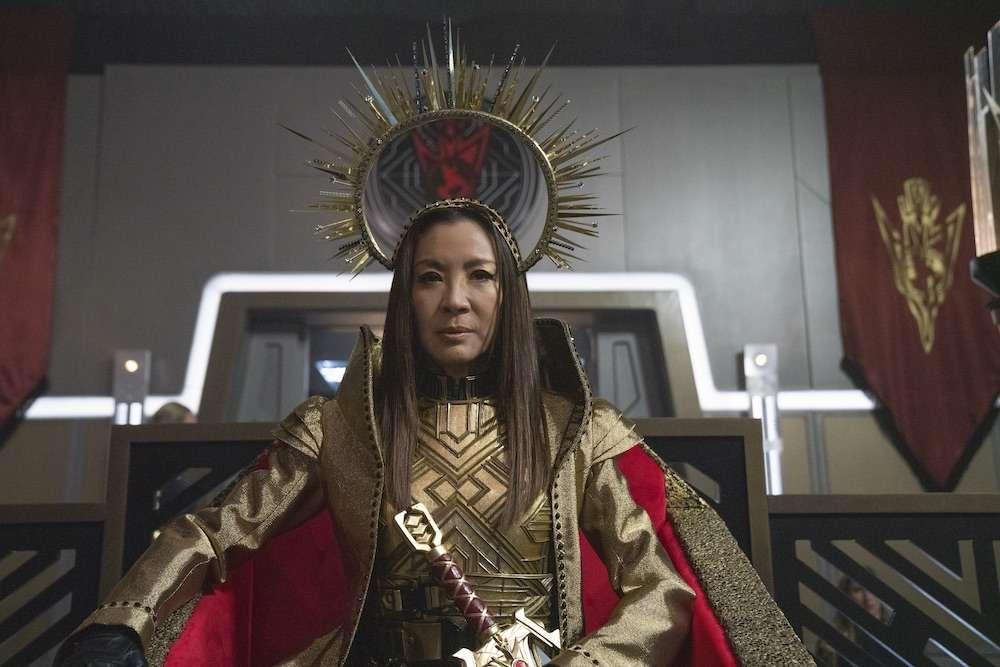

Star Trek: Discovery boldly went where few Star Trek series had gone before in its extensive exploration of the Mirror Universe. Across ten episodes Seasons 1, 3, and 5, with a Mirror Universe character even recurring in Season 2, the show delved deep into this brutal alternate reality. The unexpected jump by the USS Discovery at the end of Season 1, Episode 9, "Into the Forest I Go," left fans on the edge of their seats, only to reveal in "Despite Yourself" Episode 10 that the crew had landed in the Mirror Universe, forcing them to adopt fierce personas to survive.
Among the many compelling characters impacted by this darker reality, four stand out for their powerful transformations and lasting impressions: Cadet Sylvia Tilly, Science Specialist Michael Burnham, Terran Emperor Philippa Georgiou, and Saru.
Cadet Sylvia Tilly played by Mary Wiseman
A fan favorite known for her endearing awkwardness and brilliant mind, who Mary Wiseman described as “extraordinary and everyone”. Cadet Sylvia Tilly is thrust into a frightening role of Captain (at least to the outside world) in the Mirror Universe: impersonating her ruthless counterpart, Captain Killy. This Captain achieved command by killing her lover while he was sick. Known as "The Slayer of Sorna Prime" and "The Witch of Wurna Minor," Tilly's initial reaction when learning of her Terran counterpart is terror. She tells Burnham that her Terran self will give her night-
mares. Burnham assures Tilly "But you have the strength of an entire crew that believes in you. Fortify yourself with our faith in you. That's what a real captain does."
The transformation is immediate and striking. The moment Tilly steps onto the bridge she radiates authority and intimidation. Her line, "If you greeted me that way, Connor, I’d cut out your tongue and use it to lick my boots," delivered with captivating sultriness, perfectly encapsulates her newfound, albeit temporary, ferocity. Tilly's portrayal is
empowering for women who don't fit traditional molds of strength, showing that kindness and gentleness can coexist with powerful command. As she later reflects to Burnham, on her time in the Terran Universe “I was reminded how much a person is shaped by their environment and I think the only way that we can stop ourselves from becoming them is to understand the darkness within us and fight it.”
We later learn from Georgiou that Captain Killy helped subjugate the Betazoids and
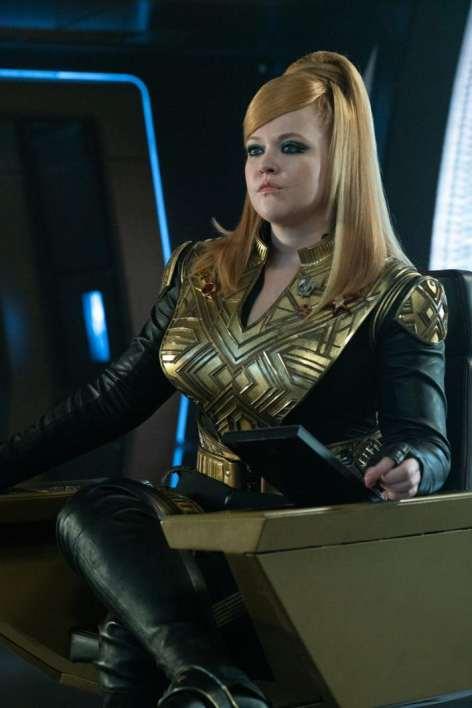
wiped out the Mintaka 3 civilization. But Georgiou wants her in the misssions because she sees that same strength in the Prime Tilly. In Season 3, we encounter Mirror Tilly again, now as the Emperor's strong and powerful right hand, demonstrating enduring loyalty even when she doesn't fully grasp the Emperor's actions. Echoes of this fierce Tilly resonate throughout the series.
Science Specialist Michael Burnham played by Sonequa Martin-Green
Michael Burnham was already a complex character, from the mid-season finale charting a course from Starfleet First Officer to mutineer, and then from prisoner to redemption-seeking scientist. Her entry into the Mirror Universe forces her to pose as her ruthless counterpart, in command of the Shenzhou—the very ship where she lost her beloved captain and mentor. The Mirror Universe becomes a new type of trial for Burnham, forcing her to navigate moral boundaries and confront regret. She discover Mirror Saru enslaved and nameless, and in an act of profound kindness, she gives him a name, restoring some of his dignity a kindness repaid when Mirror Saru later saves her life. She wonders how she can function in the harsh environment and survive unscathed.
Burnham's psychological struggle deepens as she encounters the Emperor, who is none other than the Mirror counterpart of her former captain and mentor. Her inherent trust in her former captain leads her to reveal her
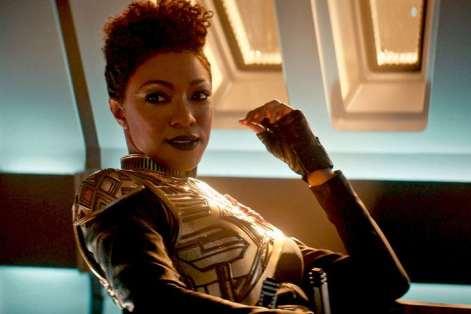
true origins. Burnham is a powerful woman who has faced tragedy, made mistakes, and persevered, saving not only herself but her crew in season 1. In Season 3, we see the truly ruthless, uncaring, treacherous, and unforgiving nature of Mirror Burnham, which only magnifies our appreciation for Prime Burnham's strength, compassion, and depth of character. Ultimately, Prime Burnham's persistence win over the Emperor, perhaps through the Emperor's
love for a lost daughter or Burnham's love for her captain. Star Trek rarely touched upon mother-daughter dynamic though many mothers and daughters are at odds with each other. We see these themes continued in the series. But the dynamic between Burnham and Georgiou provides a compelling narrative, as we hope for their reconciliation and for Georgiou to show some semblance of her Prime self.
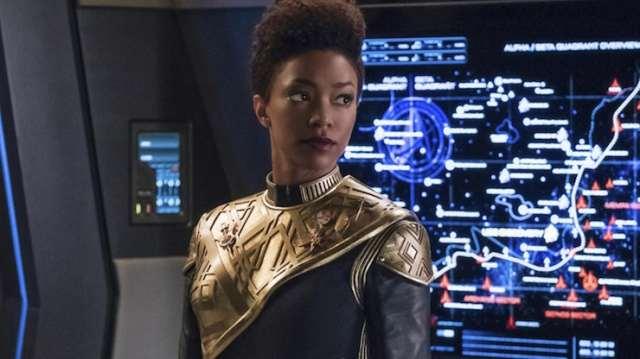
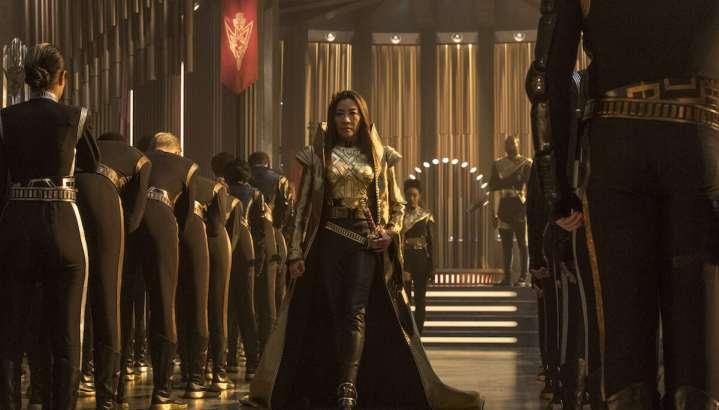
Terran Emperor Philippa Georgiou played by Michelle Yeoh
Initially known to Burnham as her beloved Prime Universe captain, Philippa Georgiou is revealed in Season 1, Episode 12, "Vaulting Ambition," as the Terran Emperor. The emotional complexity deepens when it's discovered that in this universe, Georgiou raised Mirror Burnham as her own daughter, and Burnham may be the only person the Emperor truly loves.
Her introduction is grand, with her full imperial title proclaimed: “All hail Her Most Imperial Majesty, Mother of the Fatherland, Overlord of Vulcan, Dominus of Qo'noS, Regina Andor Philippa Georgiou Augustus Iaponius Centarius.” Despite expectations of immediate hostility, Georgiou softens with Burnham, surprising us with her underlying affection. Though Burnham tries to
maintain her deception, Georgiou sees through it almost immediately. Instead of lashing out, she shares her profound grief: Mirror Burnham, her daughter, betrayed her and was executed by Lorca, whom both Georgiou and Burnham realize is also from the Mirror Universe.
Burnham aligns herself with Emperor Georgiou to stop Lorca. Together, they defeat him, with Georgiou personally delivering the killing blow, a chilling display of Terran ruthlessness, after Burnham refuses to. When the Charon rebels are about to succeed in regicide, Burnham refuses to abandon Georgiou. In a stunning twist, she brings the Emperor back to the Prime Universe, effectively rescuing the Mirror version of her beloved mentor.
Initially furious, because she's been denied a glorious honorable death Georgiou makes the
best of her situation and begins to manipulate the Federation to her advantage. She unpredictably appears to either wreck or save the day, eventually slipping into the shadows as part of Section 31. However, the only true anchor for her heart in the Prime Universe remains Burnham. Her arc culminates in Season 3 when she is given the opportunity to return to the Mirror Universe, only to find that she has been too profoundly changed by the kindness, friendship, and acceptance she found in the Prime Universe. She even alters the course of the Kelpiens. Georgiou, the "baddest of the bad," who forged an empire through ruthlessness finds more value in the heart she has gained. Her journey prompts us to consider whether she was simply a product of her environment and if redemption is possible for everyone, offering hope for others.
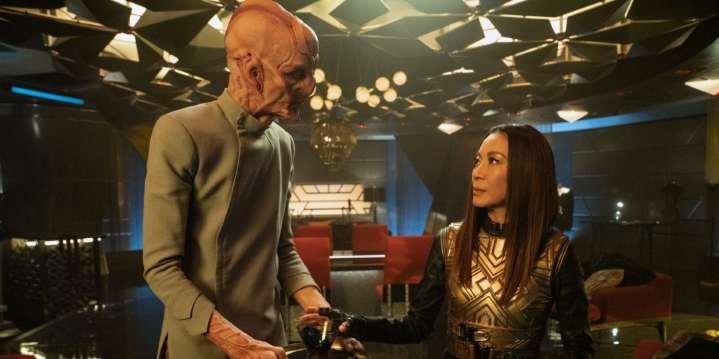
ly handles the bigoted Emperor when she arrives in the Prime Universe.
determine our destiny and that treating others with grace can inspire them to thrive.
Saru's character undergoes a magnificent arc throughout Discovery, and his journey in the Mirror Universe is particularly inspirational. When Burnham first encounters Mirror Saru, he is a nameless slave. Her act of treating him as a person awakens his selfworth, to the point where he rescues her from an assassin a stark contrast to the behavior expected of a slave. We see the slave Saru literally stand taller in the short time he knows Burnham. Prime Saru, in turn, graceful-

Later, in the Mirror Universe, Emperor Georgiou saves Mirror Saru instead of Burnham. She reveals that he can survive the process of vahar’ai the Kelpien transition from prey to predator a process that their enslavers falsely claimed necessitated culling. Saru learns this truth and realizes he can be more than he ever imagined. Georgiou instructs him to survive and share this knowledge with others. He is wise enough to discern that this Georgiou does not belong in the Mirror Universe and advises her to leave. We later see him fighting alongside the Emperor, trying to protect her. Finally, in Season 5, we discover that Saru has become a captain of his own ship, leading a rebellion and helping survivors from the Terran Empire cross into
Saru's journey is a shining example that our origins do not
Through these characters, Star Trek: Discovery allows us to see reflections of ourselves and those we know individuals who, despite their imperfections, contribute significantly to society. Much of Discovery is a story of redemption, and the characters of Tilly, Burnham, Georgiou, and Saru will undoubtedly continue to inspire future generations as their legacies grow. As a fan, I thank them for a job well done.

DONNA RUNYON: Donna Runyon is a single mom of four living in the Washington D.C. area and a lifelong Star Trek fan who firmly believes all Trek is good Trek. She's found that the camaraderie of fandom has brought many lifelong friends into her orbit, and given her invaluable life lessons such as channeling her inner Kirk when faced with the Kobayashi Maru.


Click image to get your coffee!

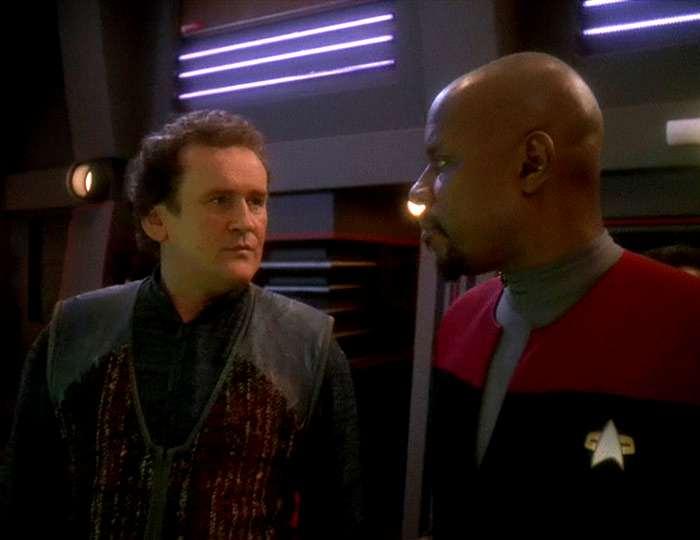



Miles “Smiley” O’Brien is the Mirror Universe counterpart of Chief Miles O’Brien in StarTrek: Deep Space Nine. While the Prime O’Brien is a trusted Starfleet engineer, family man, and reluctant hero, Smiley begins as a subjugated Terran slave on Terok Nor oppressed by the Klingon Cardassian Alliance. He works as a technician in the ore processing plant a cog in the machine, kept around for his usefulness, but not his dignity.

risking his fragile safety to fight for something greater.

The nickname “Smiley,” given to him by Mirror Sisko, is ironically based on his serious, unsmiling demeanor. Initially timid and resigned, Smiley is awakened to the possibility of freedom when Prime Universe visitors–like Bashir and Kira–show him what his life could be. In the episode “Crossover,” inspired by Mirror Sisko’s defiance and Bashir’s stories of his alternate self, he joins the Terran Rebellion,
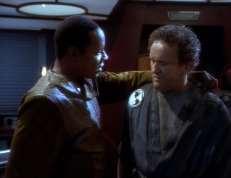
Over subsequent appearances, Smiley transforms into a capable leader and tactician. By “Through the Looking Glass,” he has taken command of the rebellion after Sisko’s death and even recruits Prime Sisko to impersonate his Mirror counterpart to win over Jennifer Sisko to the cause. Smiley’s choices become bolder but remain rooted in morality he wants freedom, not revenge or power. In “Shattered Mirror,” he constructs a Defiant-class warship using stolen Federation schematics, and in “The Emperor’s New Cloak,” he commands both the Defiant and the rebellion, ultimately capturing Regent Worf and securing a major victory.
Smiley is characterized by a quiet resilience, strong technical mind, and a deep yearning for freedom. Unlike many in the Mirror Universe, he avoids cruelty and embraces cooperation. Though not charismatic or loud, he earns respect through competence, humility, and moral clarity. His defining statement “I wanted to be free” sums up his motivation and highlights his role as one of the Mirror Universe’s more principled figures.
He is also a natural engineer, like his Prime self. But while Brien serves in a system that values his skills, Smiley has had to survive in one that exploits them. His transformation from passive worker to rebel commander is one of Deep Space s most compelling character evolutions in the Mirror Universe
While both versions are technically gifted and deeply
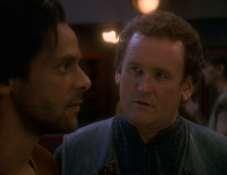
principled, Prime O’Brien is a Starfleet non-com who enjoys structure, camaraderie, and a stable family life. Smiley, by contrast, is a reluctant revolutionary, forced by circumstance to lead a rebellion and survive under tyranny. Where Prime O’Brien is often reactive and grumbles his way through orders, Smiley takes initiative, learns to command, and makes sacrifices for a cause. Despite their differences, both are rooted in decency and resilience showing that the core of Miles O’Brien endures even in a harsher universe.

MARTIN RANDALL: Martin is a freelance software developer, a serial technophile, and prides himself on his encyclopedic knowledge of Star Trek. He lives in Wakefield, UK with his wife Hazel, their two children, and three cats.


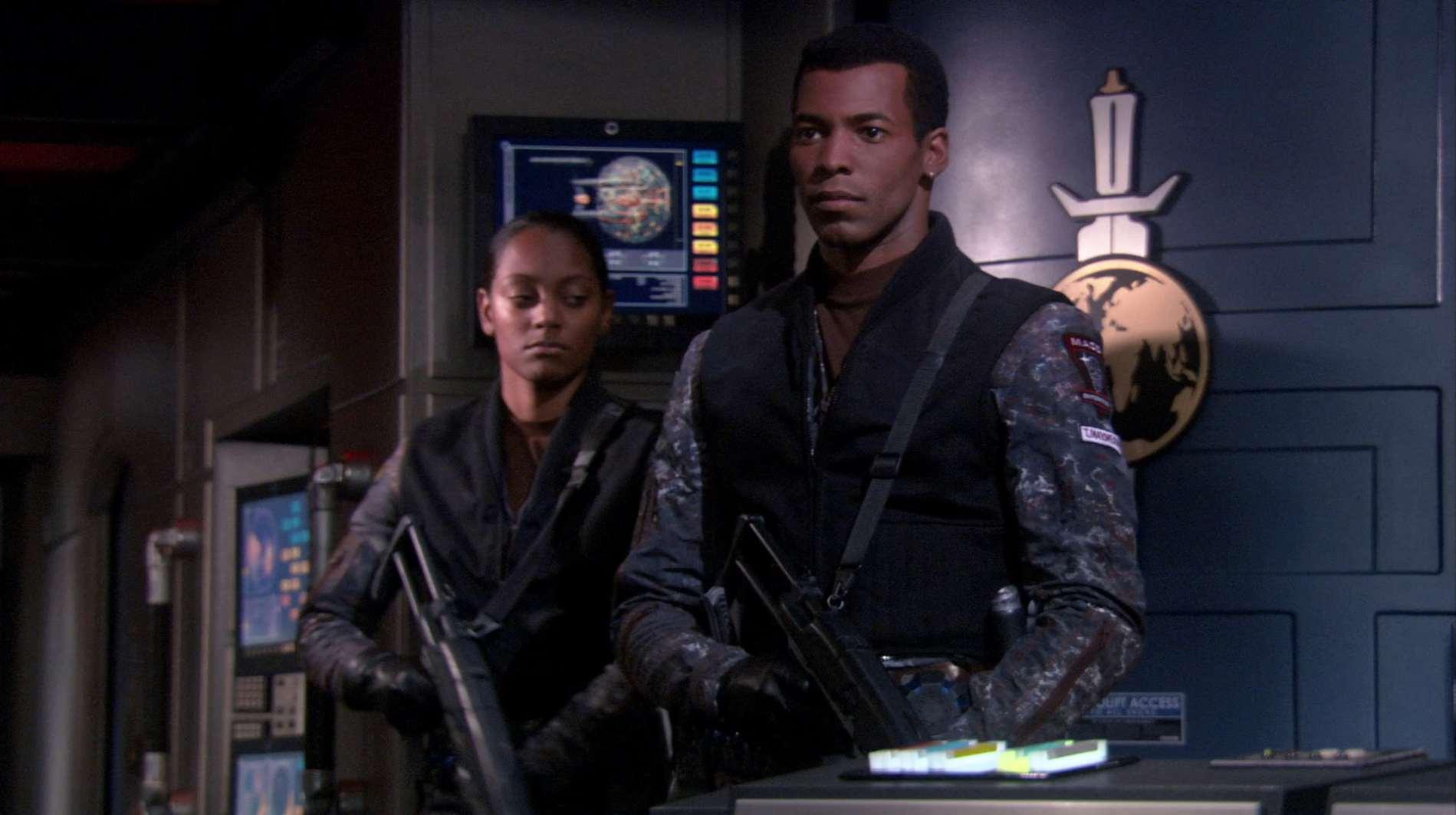




When Manny Coto became executive producer and showrunner for the fourth season of Enterprise (aka Star Trek: Enterprise) he wanted to tap into the lore that was Star Trek: The Original Series. And boy did he ever!
Many old favorites from TOS were in store for fans of Enterprise. From the opening two episodes written by Manny, “Storm Front, parts I and II,” we got to see a good old fashion Nazi storyline. Then our old friends the Augments came for a visit for three episodes, including Brent Spiner who got to play a Soong!
We were given two episodes that explained why the Klingons from TOS were different from all other series. Yet, the two part episode arc that brought us back to a favorite story from TOS was “In A Mirror, Darkly.” However, unlike the TOS episode “Mirror, Mirror” where members of the Enterprise crew were transported to the Mirror Universe, as were their counterparts sent to the Prime Universe, these episodes lived entirely in the Mirror Universe.
Part one of this two part episode arc opens with a twist from a familiar story. We see one of the most enduring moments in Star Trek lore, the meeting of the Vulcan commander and Zefram Cochrane from the film “ Contact.” However, instead of returning the Vulcan salute, Cochrane removes a gun from under his coat and kills the Vulcan. It is then that the townspeople board the Vulcan ship to capture it.
Wait, what?
In another big change, the

iconic opening song from Star Trek: Enterprise is gone, replaced with ominous music and an entirely new sequence of images are displayed to promote a history of war and death. A Terran flag is seen being placed on the Moon and the ISS Enterprise (with other ships) are seen attacking places on Earth and fighting alien spacecraft. The opening sequence ends with the Terran Empire symbol (Earth with a sword through it). Genius!
From there we see that Jonathan Archer is not captain of
the ISS Enterprise, he is second in command and uses mutiny to take command of the ship. The uniforms are different, more military in style. Phlox shows off his new methods of torture, no longer the compassionate Phlox we have come to know and love. Sato is now the captain’s woman. Trip has a disfigured face (radiation burns?). Reed is a MACO soldier. Vulcans, like T’Pol are subservient to the Empire. Mayweather is Archers personal bodyguard. Even sweet, little Porthos is now a large, mean
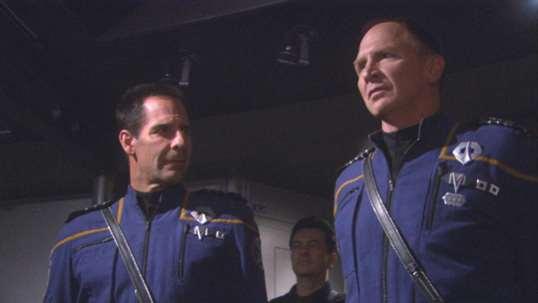
Rottweiler!
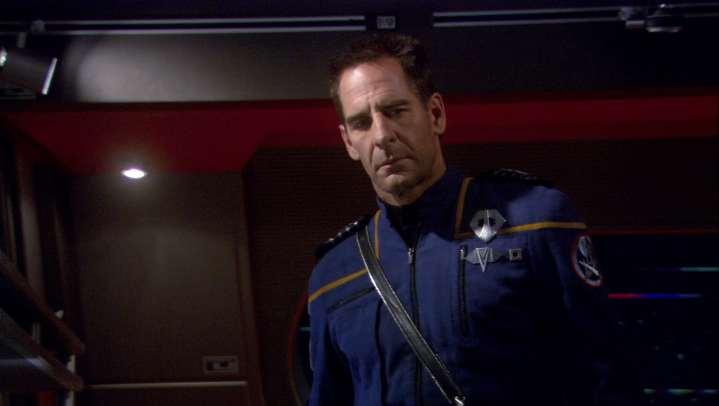
It is these little and large touches that set these two episodes apart from all the other Enterprise episodes. With story concept from Manny Coto and both episodes written by Michael Sussman, we see the Terran Empire as it was originally conceived in the TOS episode “Mirror, Mirror,” yet more vicious and violent. The writing team not only touched on this TOS episode, but also brought in another TOS episode, “The Tholian Web” and the disappearance of the USS Defiant. What happened to it when it disappeared in the web? Now we know: it was transported to the Mirror Universe. And this is
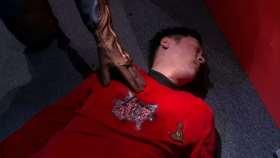
what Archer seeks, to obtain the Defiant and use its advanced technology from 100 years in the future to dominate their enemies.
Once the ISS Enterprise arrives at the location of the USS Defiant, Archer and his team investigates the ship to see what is happening on it. Once on board, we get another tidbit from the TOS series, a dead “Red Shirt,” as expected. With the ISS Enterprise trapped in a Tholian web, the away team aboard the Defiant tries to restart its systems. We get to see the bridge of a Constitution class starship lovingly recreated with sets and blue screen work, just like the TOS Enterprise. With the ISS Enterprise destroyed by the Tholian Web, the survivors take to the Defiant and they escape from the Tholians.
Using the alien slaves on board the Defiant to restore the warp drive, we get to see another character that appeared in only one episode from the TOS era, a
Gorn. In this case, a Gorn slave master that was not going to give up without a fight. In the TOS episode “The Arena,” an actor in a suit played the Gorn captain. In this episode, with the use of motion capture technology, the Gorn
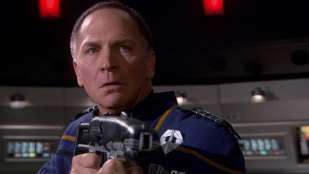
named Slar was computer generated to appear more savage and frightening. This version of the Gorn would be seen once again, yet even more frightening in the first and second seasons of Strange New Worlds. Ultimately, the remainder of the crew of the ISS Enterprise are ordered to return the Defiant back to Earth. Yet Archer wants it
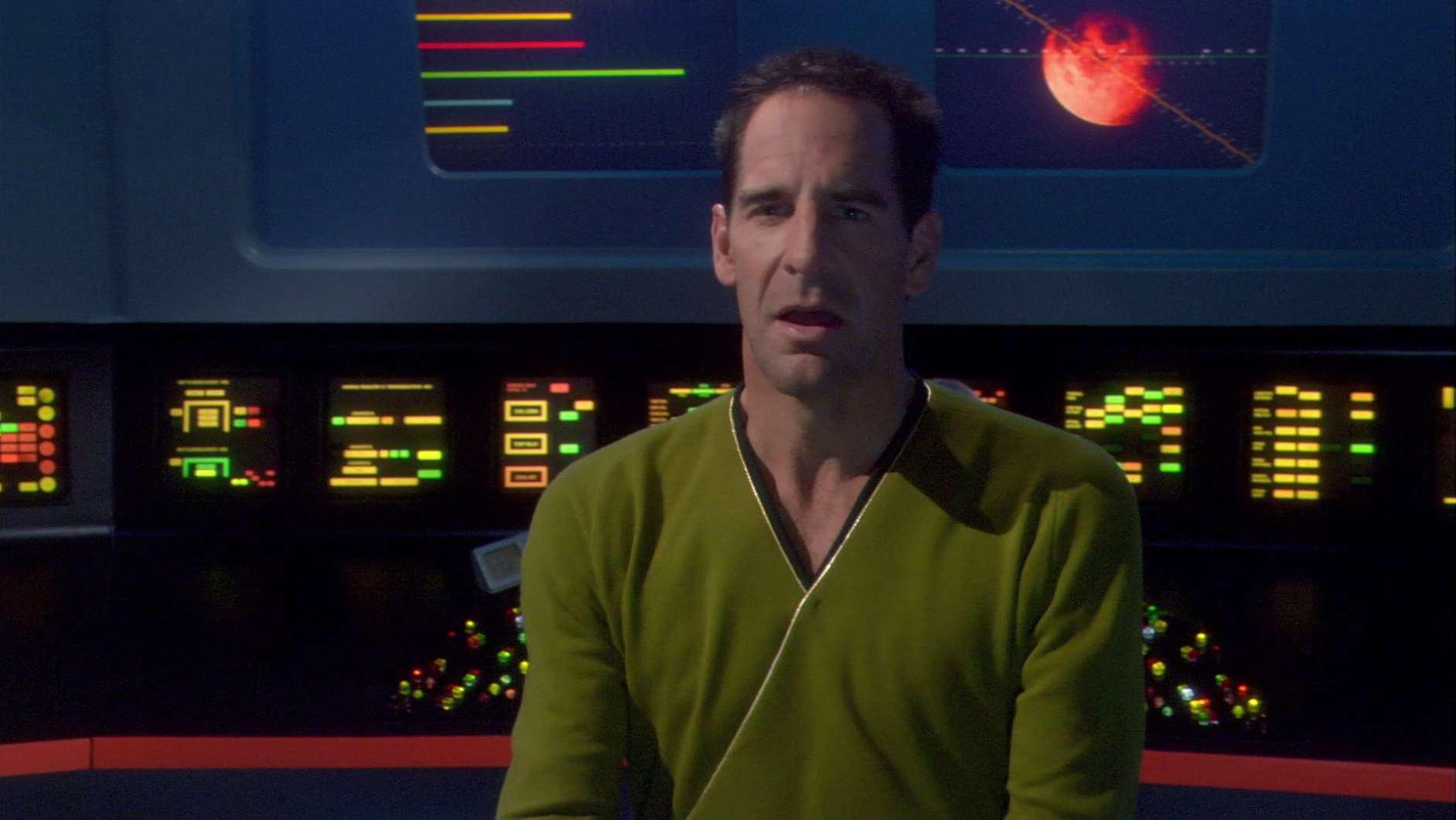
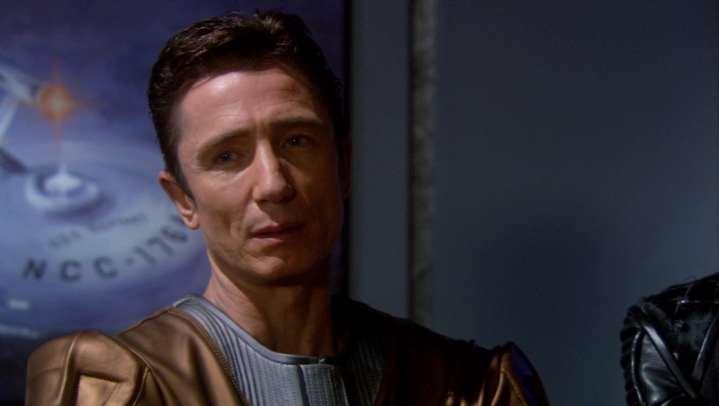
for himself and to take it into battle against the rebellion. He is ordered by Admiral Black, who commands the ISS Avenger to relinquish command. Rather than follow Black’s orders, Archer kills him and destroys the Avenger.
Enjoying the fruits of his victory, he is poisoned by Hoshi who then takes command of Defiant and, upon arriving at Earth, proclaims herself Emperess! You go, girl.
What I enjoyed about these two episodes is that it takes the elements of the TOS episode, expands it, and then lovingly gives
us a glimpse back to those glory days of TOS and the original NCC1701 (no A, B, C or D). There we see all the gumdrop lights on the control surfaces; the brightly colored pipes and operational systems are reproduced to revisit once again. Props from the TOS era are present like the flip communicators, the phasers, even all the background sounds that we loved are there as well, including Majel Barrett as the computer voice. We get to see Trip in a Red Shirt, T’Pol in a blue mini-dress and Archer sporting Kirk’s famous green tunic. For those of us who

watched TOS in its first run, this was like a walk down memory lane.
Sadly, season four was the last one for Enterprise. Had its run continued for the full seven years, I am sure Manny would have touched on so many more aspects of Star Trek, even giving us the one story line we all would have loved to have seen: The Romulan War.
Thank you, Manny Coto (we miss you dearly).

STEPHEN MIRKIN: I first learned about science fiction the moment I was able to reach the on/off knob on my parents’ black-and-white TV set. Being born in 1956, I was there on Sept. 8, 1966 to watch the first episode of Star Trek. Since then, I have watched every TV series and every movie and I only look forward to the next great Star Trek moment.

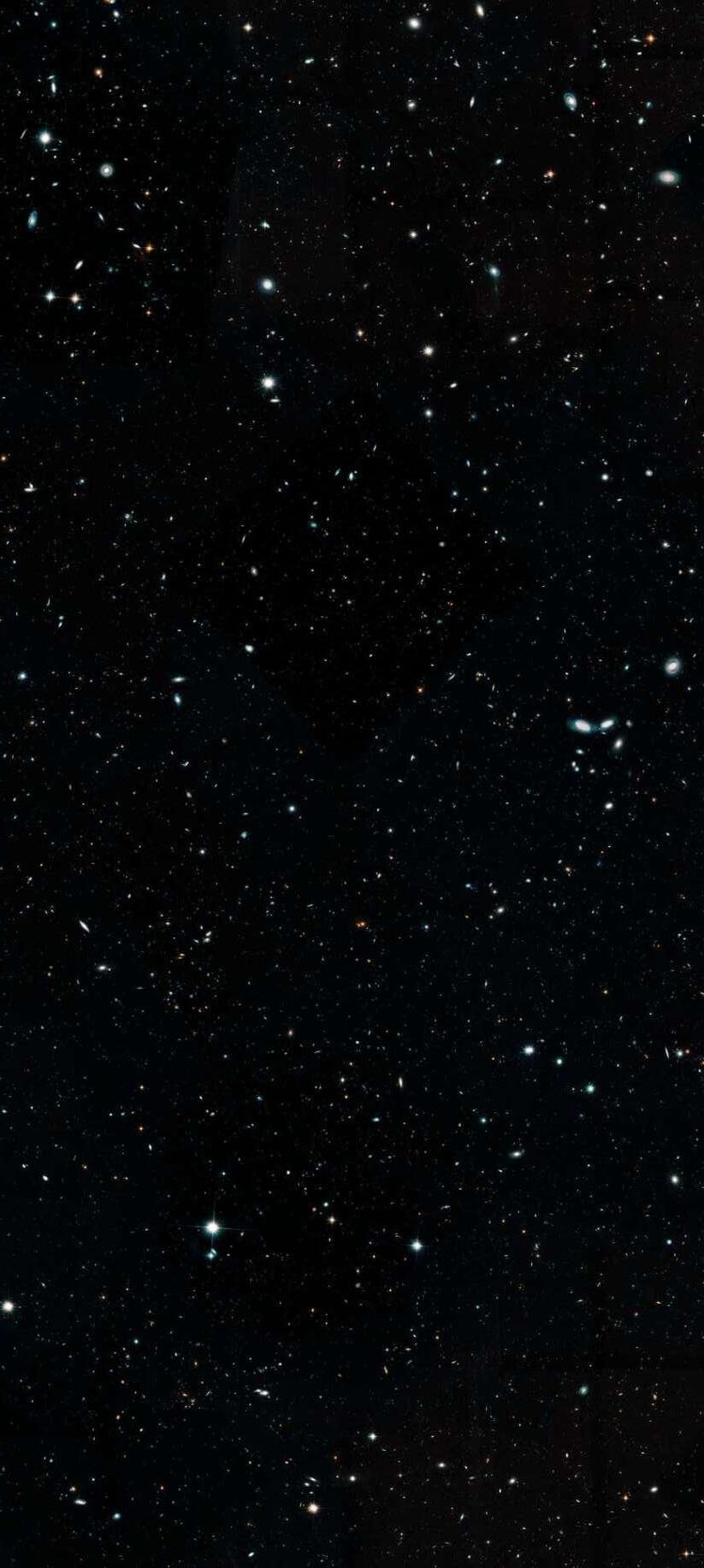


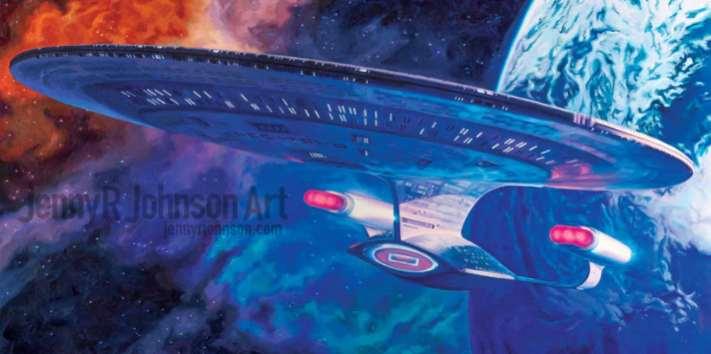
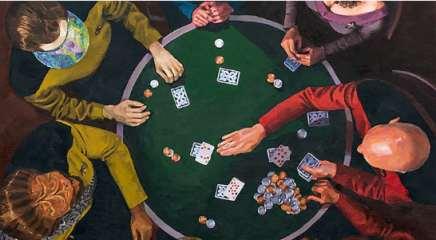
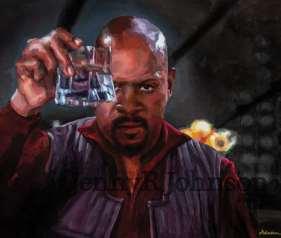








Ever since the transporter malfunction sent Captain Kirk, Dr. McCoy and Lieutenant Uhura to an inverted form of their universe, fans have been fascinated by the Mirror Universe. Fortunately, we’ve gotten to visit the Mirror Universe in Deep Space Nine, Enterprise, and Discovery. However, we never got to see Captain Picard and crew travel there in live action. Thankfully, Diane Duane takes them (and us) on quite a trip in her book Dark Mirror.
Our story starts somewhere in the middle of the fourth season of StarTrek:TheNext Generation. The Enterprise is picking up a special passenger: a Starfleet specialist in string theory. The specialist, Commander Hwii, is of cetacean origin, a trait that serves him well in his study of string theory.
All seems to be well until it isn’t. The planet that had hosted Hwii contacts the Enterprise-D frantically trying to convey a warning. Shortly after, space
blinks and it’s Hwii’s turn to be frantic. According to him, they are no longer in their own space. Soon after, an intruder is caught in Engineering, and the crew discovers they are in a dark mirror of their own universe. Unencumbered by time or budget constraints, we as readers get a full introduction to this alternate universe. We meet polar opposites of many of our favorite crewmembers. Note that this book is set before any of the Mirror Universe events in Deep SpaceNine.
Lieutenant Commander La Forge and Lieutenant Commander


Click the book cover to grab your copy!
Troi get to shine in this adventure, dealing with unpleasant counterparts and fulfilling vital missions aboard the other Enterprise. Captain Picard makes sharp observations and demonstrates once again the difference between a boss and a true leader.
I highly recommend picking up a copy of this book and reading it as soon as you get a chance. There are no wasted scenes or characters, which is impressive for a book with 337 pages.
My personal rating:





4.5 out of 5 stars. Engage!

STEPHANIE L. SMITH: Stephanie hails from the Kansas City metro area with her sibling Jordan and 2 cats. Her day job is working from home as a staff accountant.





The Star Trek mirror universe first introduced, fittingly, in the original series episode “Mirror, Mirror,” left a lingering question for generations of fans: what happened next? We would have to wait until Star Trek: Deep Space Nine for another visit to the Terran Empire.
But what about Star Trek: The Next Generation? How would Captain Picard and his crew have dealt with their darker, grittier, often-goateed counterparts? In 2017, IDW gave us the answer to that question, and launched an entire series of mirror universe stories featuring the captain and crew of the Enterprise-D.
The first series, originally released monthly, and now available as an omnibus collection in print and digital formats, included three arcs. In “Mirror Broken”, we are introduced to the TNG-era of the mirror-verse where Picard is still at the helm of the I.S.S. Stargazer. The story continued in “Through the Mirror” with both the prime and mirror crews on the Enterprise-D, and concluded with Terra Incognita, which focused on Lt. Barclay. There was also a one-off story, “The Origin of Data,” which tells the story of how the mirror-verse characters ends up on a starship. It was originally only available in the LootCrate subscription boxes but is included in the omnibus.
All of these were written by David Tipton and Scott Tipton, with art by J.K. Woodward, Marcus To, Chris Johnson, Josh Hood, Carlos Nieto, Debora Carita, Tony Shasteen and Angel Hernandez.
The stories are fast paced, but still pretty meaty, with a good
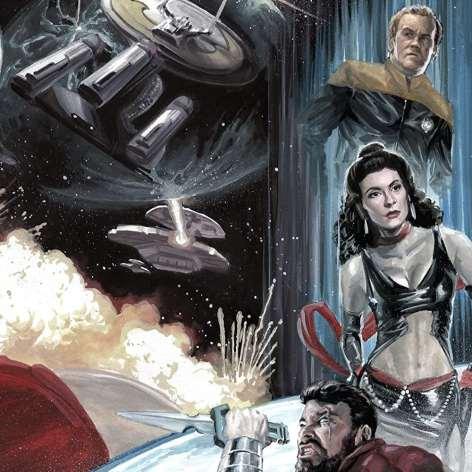
balance of plot and action. The art for the prime universe characters is generally accurate. Where the art shines is in the mirrorverse, where those sleeveless uniforms allow the characters to have some lovely, lovely muscles. (And the mirror version of Geordi’s visor, looking more like goggles that wrap around the back of his head, is just cool.)
Some of the choices were particularly interesting. Barclay is a lead character. Issue 0, which was a Free Comicbook Day offering, is from his point of view, and sets up the entire universe. Data, rescued from Soong’s dilithium mines, works to improve himself by installing “upgrades,” and Dr. Crusher is hiding a secret about Wesley. There were some inspired
uses of characters we didn’t get to spend enough time with in the main series. Guinan is not as poised as we are accustomed to, and Leah Brahms has a significant role in the story. Overall, it’s the kind of adventure that is perfectly suited to the graphic novel medium, going to places you couldn’t necessarily show on TV, but still remaining true to the core of the world (or worlds) that we love. In 2021, the same team, with the addition of Gavin Smith, gave us a year long series, “The Mirror War” , which told the story of the war between the Terran Empire and the KlingonCardassian alliance from the point of view of the Enterprise-D crew, though there are cameos from the DS9 characters. This series
in the mirror universe.

It's very much a war story, with a good mix of action, battle strategy, and intrigue. Originally released as eight issues, it’s also available as an omnibus edition in both print and digital formats.
The other issues in this series are a collection of one-offs, each focusing on a specific character, and, as with the others, is now available as an omnibus called “Warriors of the Mirror War” . The characters that are highlighted in this series are Data, Geordi, Sisko, and Troi, though, again, it remains entirely within the mirror universe.
The writers for this series include Scott and David Tipton, Celeste Bronfman, J. Holtham, Danny Lore and Marieke Nijkamp.
entina Pinto, Carlos Rodrigues, Hendry Prasetya, Megan Levens, Charlie Kirchoff and Neil Uyetaki.
Taken as a whole, these collections give us a comprehensive look at the mirror universe from the Enterprise-D’s perspective and expands upon the politics of that time and place in a way that expands what we saw onscreen in other series.
What I liked most: great storytelling, the art for the mirror characters, and the cameos from one-off characters that felt almost like Easter eggs, but weren’t, quite.
What I disliked most: A little too much Barclay, especially in the Data-focused one off.
Casual fans may not appreciate these stories as much
mend them for anyone who has enjoyed the novels, and appreciates stories that may not be canon, but still let us visit our fictional friends. Also recommended for anyone who likes their Star Trek a little bit dark.

MELISSA A. BARTELL: Melissa A. Bartell is a writer, podcaster, voice actor, improviser and kayak junkie currently living on Florida's Nature Coast. She has one husband, two dogs and only one kayak (so far). Find her at : MissMeliss.com or on social media: Bluesky | Facebook | Instagram | Mastodon






Mirror, mirror on the ship,
Landing party did a flip
Things are different, dark and weird

They’re met by Spock with a beard.
Uhura, Kirk, Scott and Bones
Determine that they are clones
Transported to a different place
A mirror universe in their space
Where right is wrong, and wrong is right
And everyone loves a good fight.
Killing is the name of the game
Everyone trying to make a name.
Torture is to be expected
Death will always be accepted
Chekov and Sulu want to advance
They must kill to get that chance
Treachery is lurking everywhere
Betrayal and danger is laid bare
Hatch a plan to get back to prime
Hurry up, they’re running out of time
Bones and Scotty fix the ship
To take them on their return trip
Uhura plays a pivotal part
Distracting Sulu, a work of art.
Bearded Spock knows something’s planned,
And is determined to understand
In order for the answers to find
He must merge with McCoy’s mind
Logic dictates he must assist
So their window is not missed
Kirk implores Spock to be the one
To change the way things are done
Spock is Spock in any realm,
And logic runs at his helm.
The landing party makes it back
Things can now get back on track
Bones trades barbs with Mr. Spock
Spock replies and Bones he mocks.
All is right as it should be,
They’re back home with family


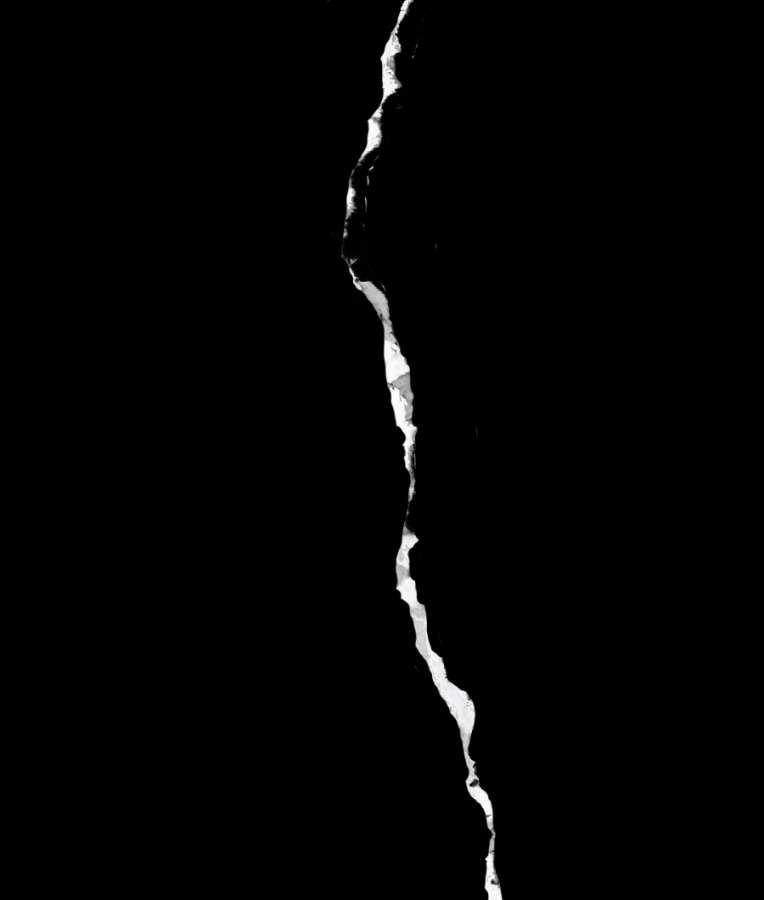

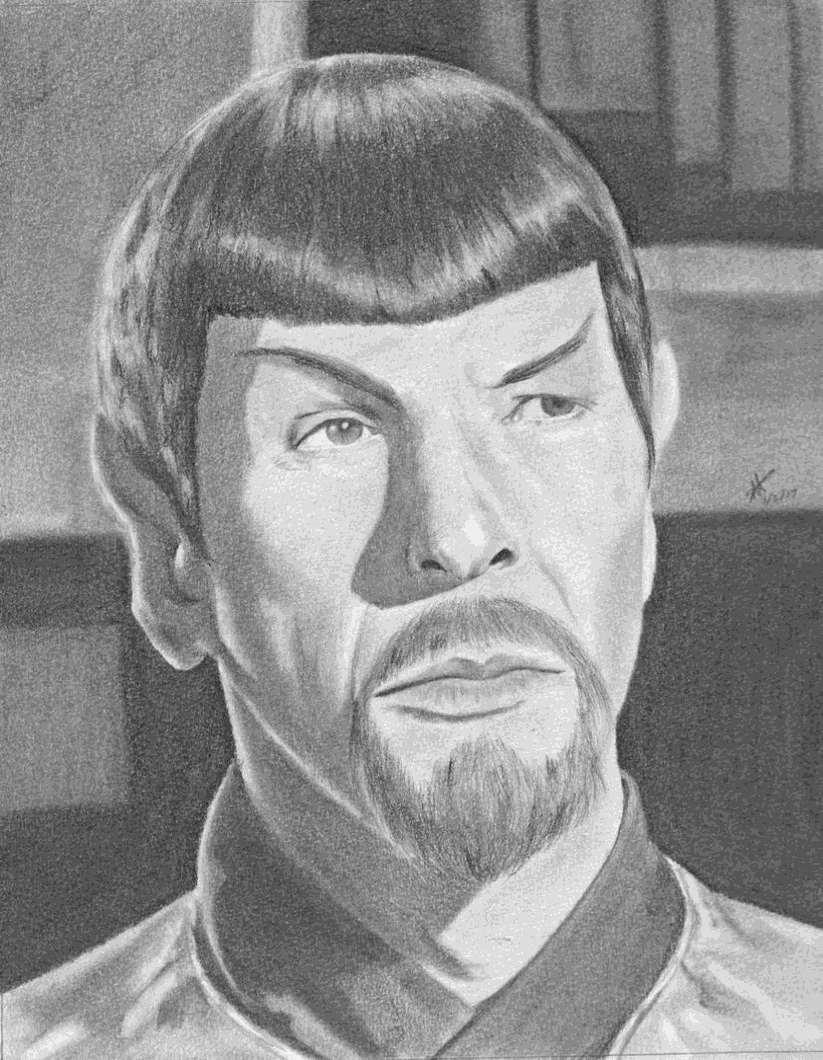






My first Star Trek ‘cosplay’ was when I was in the sixth grade. I was eleven and my dad had introduced me to the original Star Trek series a year before that. My mom and I went to Goodwill together, getting a red shirt and skirt so I could go to the middle school Halloween dance dressed as a redshirt. Thankfully, I survived both the dance and middle school.
A little over a decade later, I still maintained my love of Star Trek. I’d cemented myself as a redshirt by getting an engineering degree, I’d joined the local Trekkie group, and I’d attended my first Trek convention in San Francisco. I had one actual uniform, an Enterprise-era flight suit, and I had quickly patched together the Enterprise-era desert uniform with tape and borrowed clothing. Coming home from that convention had only solidified my love of Trek, and I had a newfound interest in cosplaying. I set my sights on something a little harder, thinking about it for a bit before deciding to create a mirror universe uniform. The uniforms are rarely ever sold, which means that fans who have them usually need to do it themselves.
Earlier this year, Creation Entertainment had announced the “Salute to the Women of Sci-Fi” con in Burbank, which was within driving distance. On the guest list was Linda Park, best known for playing Hoshi Sato in the prime universe and Empress Sato in the mirror universe. Combined with my idea of creating a mirror universe uniform, I knew what I wanted to do.
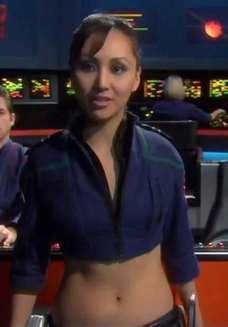
Linda Park as Empress Hoshi Sato in “In A Mirror, Darkly –Part 2.” From TrekCore.
Since my degree is in engineering, I’m good at solving problems. The biggest problem that I faced was that I had no clue how to sew, but I was handy with a roll of duct tape. I studied the mirror universe uniforms from each series, noticing the ones on Enterprise were just cropped flight suits that could be taped together with a little dedication.
I ordered the patches, a fitted athletic top, and loose pants to use as the base. The athletic
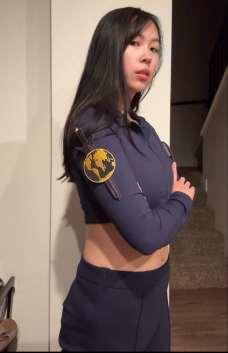
top was already cropped, but judging by the picture online, it was a bit longer than the actual uniform, so I planned to tuck it to shorten it. Once everything arrived, I tried it on and loosely added the patches, finding that the prototype would work.
Development started a few weeks later when I had a few hours of free time. All I needed to buy was duct tape (one roll each of black, teal, and silver) and double-sided fabric tape. I also needed some cardboard (which I got from a recycled Amazon box) and a black Sharpie (which I already had).
Back in middle school, I had fallen into the duct tape crafts craze, which meant that I already had a clear idea of how I wanted to design the belt. I laid down a piece of the black duct tape, sticky side up, and then cut it. Then I’d take another piece of black tape and place it sticky side down, leaving a little excess of the sticky side hanging out. I repeated the process to create a belt that would sit a little bit below my bellybutton, just like in the show, and then added a little extra length for good measure.
Once the base was done, I chose one side to be the “good” side that would be viewed, and one “bad” side that would be hidden. I grabbed small pieces of silver tape, aligning the “good” side in a straight line, while the “bad” side held the excess lengths of tape. I continued for the entire length of the belt, occasionally retaping until I was satisfied. To secure the belt, I taped the overlap together with the doublesided fabric tape.
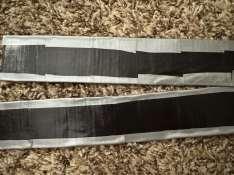
After finishing the belt, I moved onto the uniform top. I colored in the zipper with the black Sharpie before deciding to start taping the stripes on. I found that the duct tape didn’t want to stick to the material of my shirt, so I used the double-sided fabric tape again as a base for the duct tape to stick to.
Since the athletic material is very stretchy, I needed to wear the uniform while taping to make sure that it would turn out right. I began with the black zippers on the front, finding that the default thickness of the fabric tape
worked perfectly. The stripes were the hardest part since I had to cut the fabric tape in half and tape around the back while I was wearing the shirt.
Once finished with the initial tape-down, I went back in and removed the protective covering from the fabric tape, placing teal duct tape on top of it until the stripes were done. I then added fabric tape to the back of the patches, cutting it as needed to adhere to smaller areas. Once I was satisfied with the amount of tape, I stuck them on each side of the shirt.
After that was done, I made the shoulder pads by cutting out a small section of cardboard and wrapping it in black duct tape. In canon, Hoshi has two silver stripes, so all I had to do was add two thin pieces of silver duct tape. Once I’d added fabric tape to the bottom, all that was left to do was press them on top of my shoulders, completing the uniform.
I hung it in my closet, awaiting the day of the conven-


tion. I planned to wear it on Sunday, which was when Linda Park would be there. That fateful Sunday, I put on the uniform, folding the sleeves in on themselves so that the “wrist” end was tucked in and closer to my chest. There, I attended her panel (where she spotted my cosplay in the audience!) and got a picture with her at her table. She was great and even took a picture of me, which I later found that she posted on her Instagram story.
A week later, I wore the same uniform to Wondercon in Anaheim, where I was joined by two of my other friends who had ordered and tailored their uniforms. I also have plans to attend the 2025 Las Vegas convention in August for the first time this year, where I’ll be wearing this uniform since I’m a huge fan of both Enterprise and the mirror universe.



The completed version of
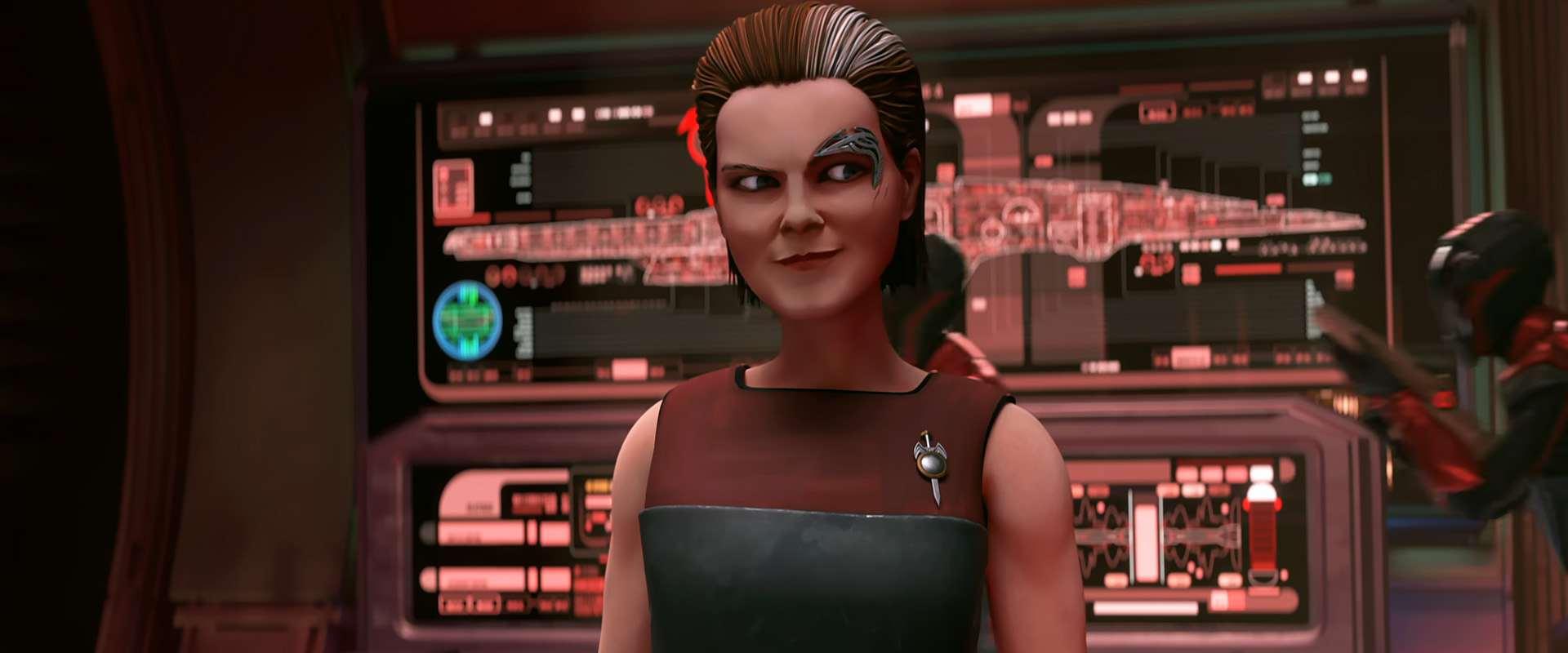

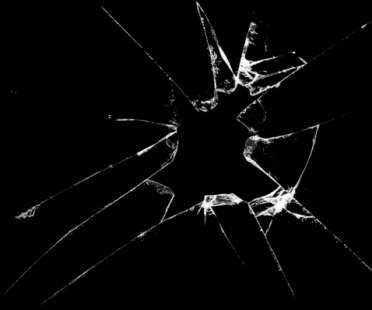


Star Trek: Prodigy’s Season 2 episode, “Cracked Mirror,” was a nice addition to the Star Trek Mirror Universe. Unlike Star Trek: Voyager’s “Living Witness,” which is about revisionist history, it’s an actual mirror episode.
Directed by Ruolin Li and written by Erin McNamara, the episode begins with the crew of the Protostar picking up from where “A Tribble Called Quest” ended, with the crew traveling at warp speed to meet up with Admiral Janeway on the VoyagerA. When they drop out of warp, a wave of energy flows through the ship. Everyone can feel it, especially Gwyn, whose temporal discriminator glitches.
The crew board the Voyager-A, receiving a warm welcome from The Doctor. When asking about the whereabouts of Admiral Janeway, the crew is shocked to learn that she died in the line of duty aboard The Infinity. Admiral Jellico is now in charge of the Voyager-A. The crew is saddened yet confused because as far as they know, Janeway is aboard Voyager. The Doctor hypothesizes that the crew must have been affected by a temporal
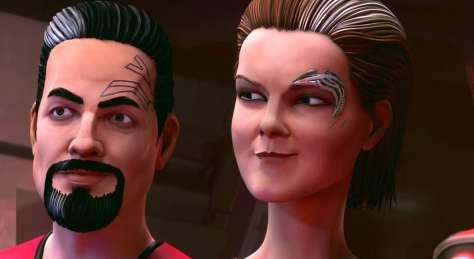
anomaly and requests that they go to sickbay for further examination. If that’s the case, they will have to be sent back to reality to be reunited with their Admiral Janeway. Part of the crew fills the turbolift, leaving Rok and Zero to take the next one. As they head towards sickbay, another energy wave goes through the ship, affecting Gwyn yet again, this time making her temporal discriminator show different coordinates. They get off the lift and the area is destroyed. In sickbay they are greeted by Thadiun Okona, who tells them that the Protostar’s weapon destroyed all of the ships in the quadrant. Meanwhile, when Rok and Zero exit the lift into sickbay, the ship is full of Enderprizi-
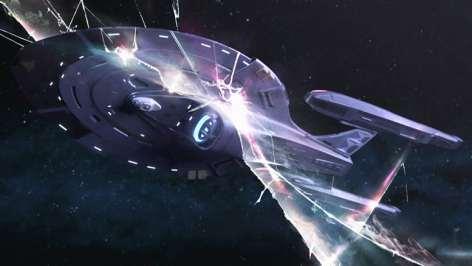
ans who immediately request the assistance of Captain Tuvix.
As the other crew is sitting in a conference area, they hypothesize that different areas of the ship are affected by different realities, so they won’t be able to contact Rok and Zero. This is later confirmed when they notice a rift going through the Protostar that actually looks like a cracked mirror, which was created when they went into warp. They decide that the deflector dish can be used to fix the rift.
Okona transports them to another area of the ship. In this reality the ship is black and red, covered in symbols of the Terran Empire. The crew is greeted at gunpoint by an alternate Janeway and Chakotay. Captain Chakotay realizes that they are in the Mirror Universe. They are sent to the brig and Captain Chakotay explains to them what this reality is. They come up with a plan to escape the brig and chaos ensues with a twist from the Terran Empire soldiers.
As someone who has never seen a mirror episode, I really liked this one. It was so much fun seeing another side of Janeway, like the version we saw in “Living
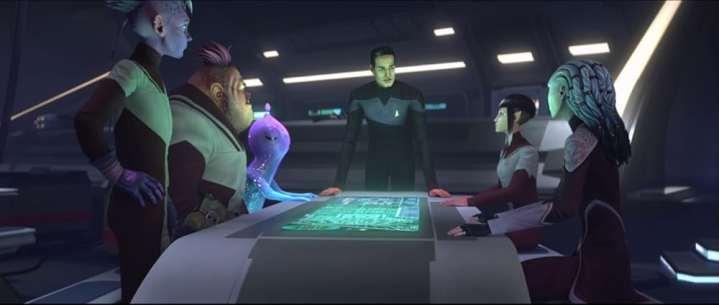
Witness.” Janeway may be a tall, strong, short-haired, take-noexcuses type of captain in the MU, but she’s the same way in the core universe (minus the short hair). The only difference is that she is ruthless. But behind that ruthlessness you see the love that she has for Chakotay, and Captain Chakotay uses that to his advantage to save both the Protostar and the MU Voyager.
As I was watching this episode, I assumed that the MU was 100% the opposite of the core universe but it turns out, that’s not true. The characters still have some of their traits from the core universe, it’s just that those traits are used to display ruthlessness so
humanity can dominate the galaxy.
I also love the animation in this series. Especially the animation done on Janeway, Chakotay, Jellico, and The Doctor. They look so much like their live action selves. The animation is done so well, one would think the actors were doing motion capture during the making of this series.
My only issue with this episode is that we didn’t get to explore the reality with Captain Tuvix and the Enderprizians. The Frankenstein-looking uniforms not only represent their culture, but it is also a very painful reminder of how Tuvix was created. Overall, this is a very good
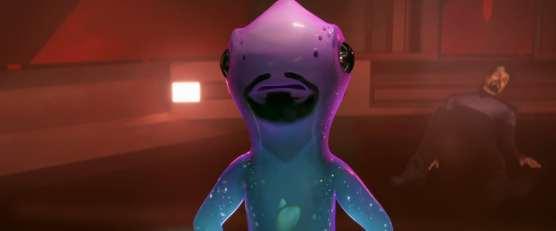
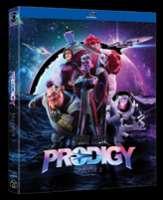
episode. I believe everyone should watch it, especially Voyager fans who didn’t get an MU episode. Also, I recommend reading the 2019 comic book, StarTrekVoyager: Mirrors and Smoke. It’s a oneshot comic that tells the story of the Terran Empire Voyager captained by an iron-fisted Janeway. It is available for download from Amazon Kindle.

MARISSA ANNE: Marissa Anne is an employee of the State of Indiana. She enjoys StarTrek, especially Star Trek:Voyager. She lives in Indiana with her family.


Click the Blu-Ray cover to order yours!


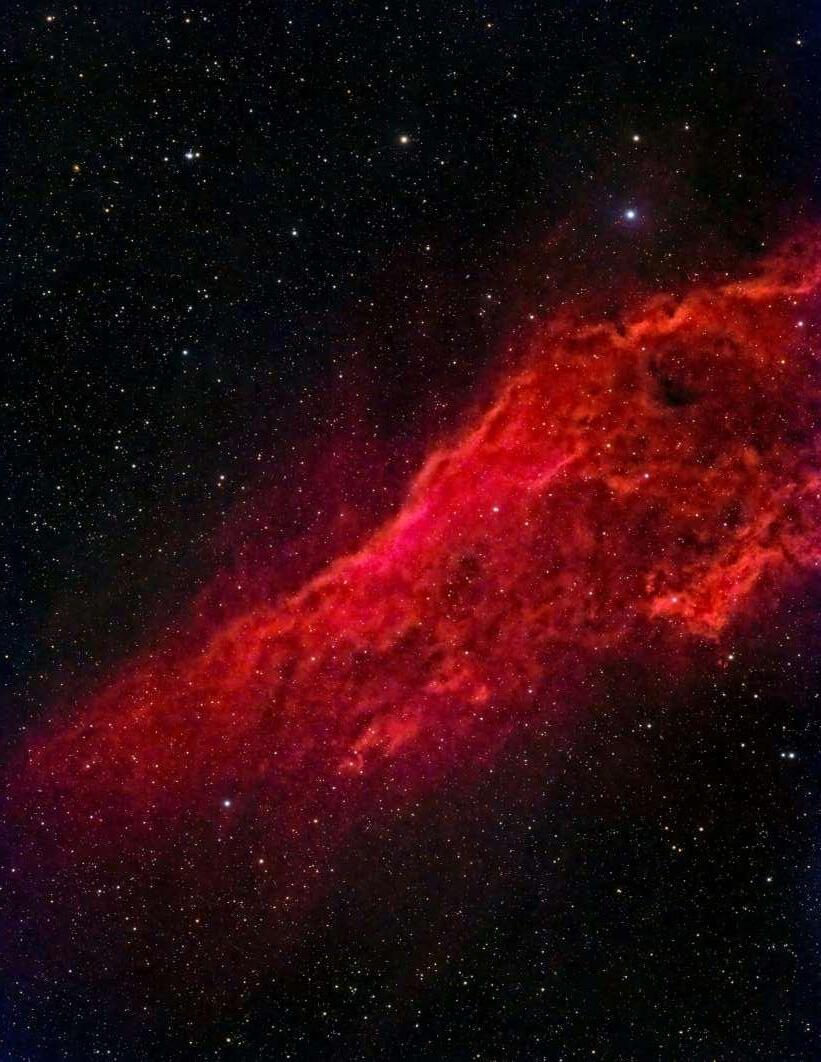


PRE-ORDER YOUR COPY TODAY!




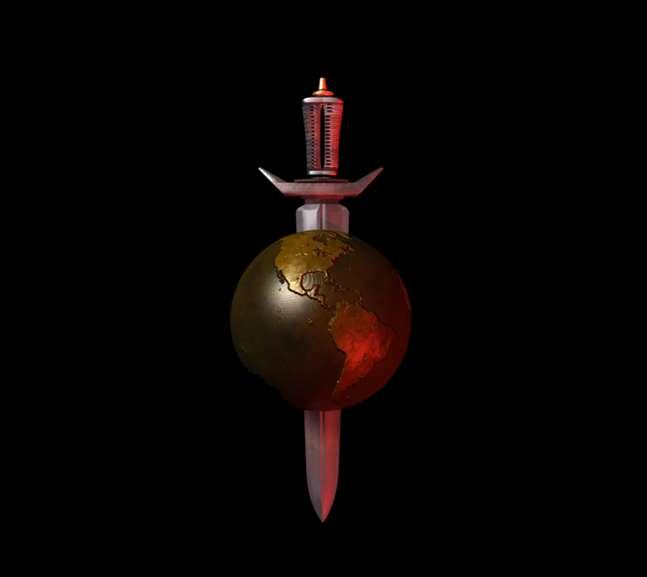

THE TERRAN EMPIRE
There is a place that is much like our own
All that we have here seems to exist there
Why that side is our mirror is unknown
It can often be hard not to compare
Our Empire has a glorious history
Conquering others made us all stronger
Spend time with us, our ways are no mystery
Opposing us will lead toyour slaughter
We admit for a bit there we were weak
We tried something new that did not work out It took some time to get back to our peak
To ourselves we remained steadfast throughout
Though crossings are rare, they've made an impact
We've enjoyed the chances to interact
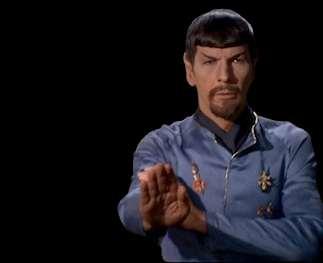
THE INTENDANT
I've a lust for life that won't be denied I allow no one to get in my way
Have no restraint, I don't even try
All listen when I have something to say
I am loved and feared which quite pleases me with a temper that makes all tremble
Unleashing it is quite something to see
I have zero tolerance for rebels
I do what I must, and then relax
surrounding myself with those I enjoy
I have in my quarters all kinds of snacks
love when my charms I get to employ
I met someone who was so beautiful like me, her looks are not disputable








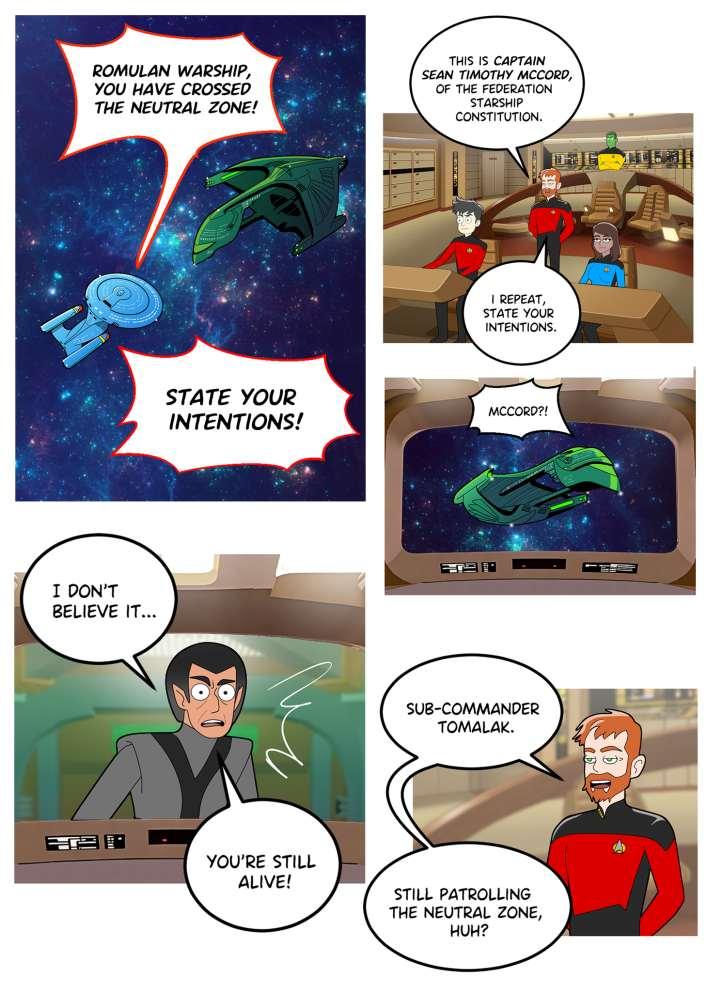













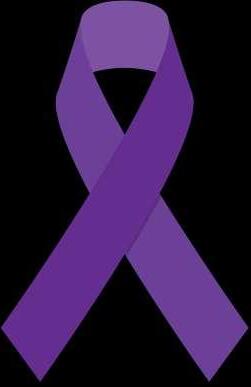
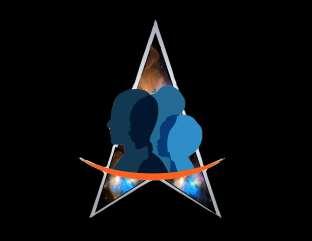







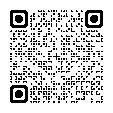
(Click the DONATE above or scan the QR code at left)
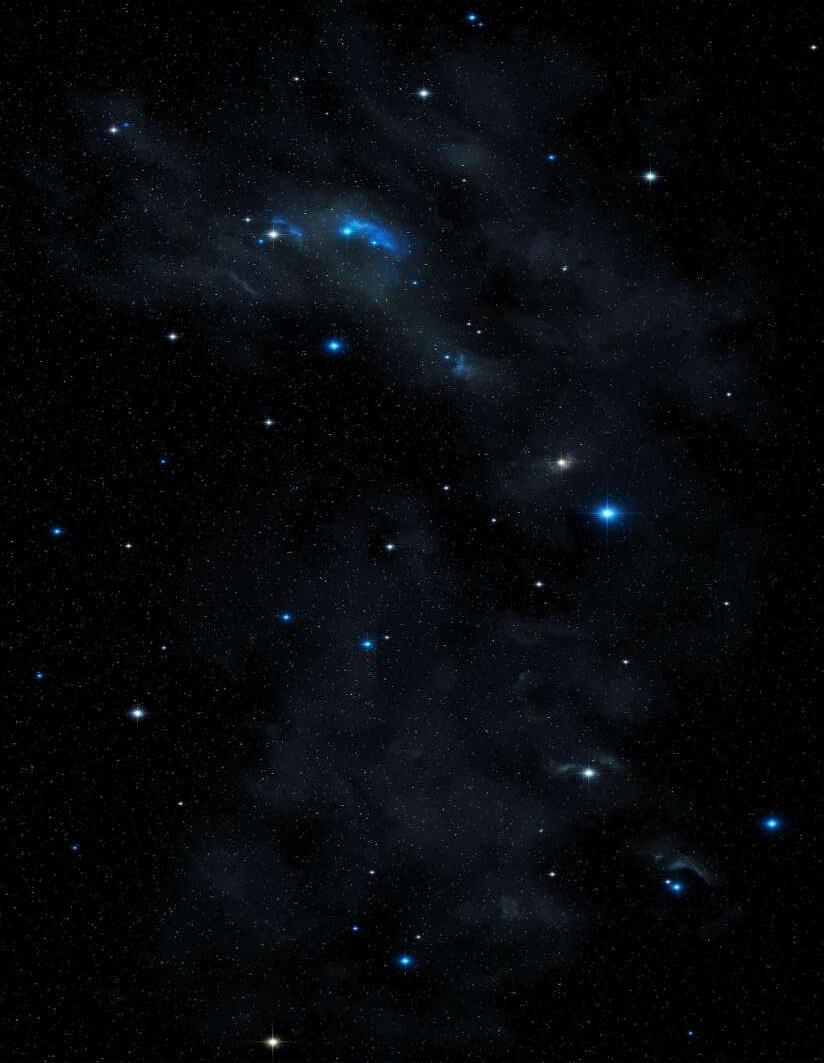
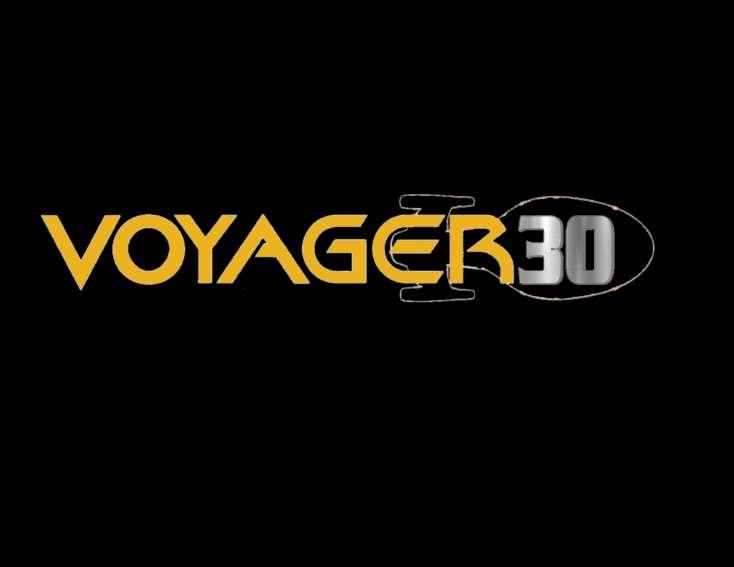


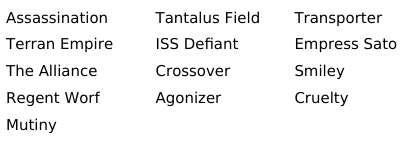


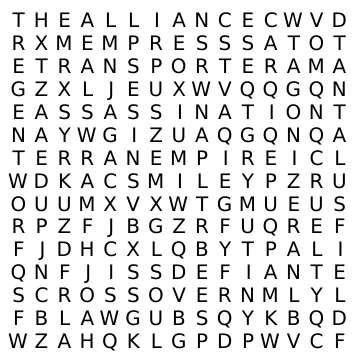
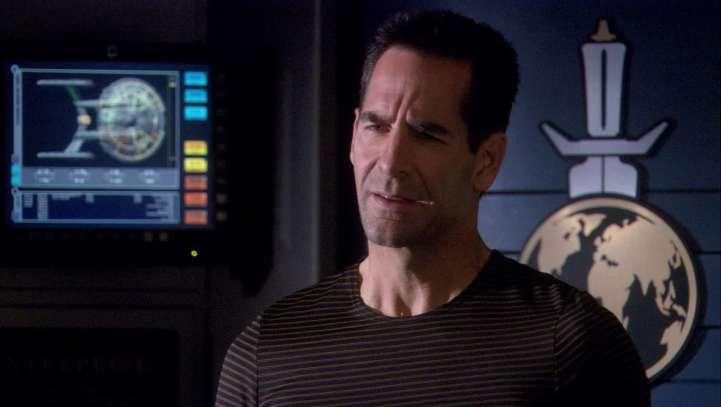



An updated list of events and conventions from all across the world. Marina is recognized in the Star Trek fandom as an expert on conventions, and a much beloved presence at Trek events!.
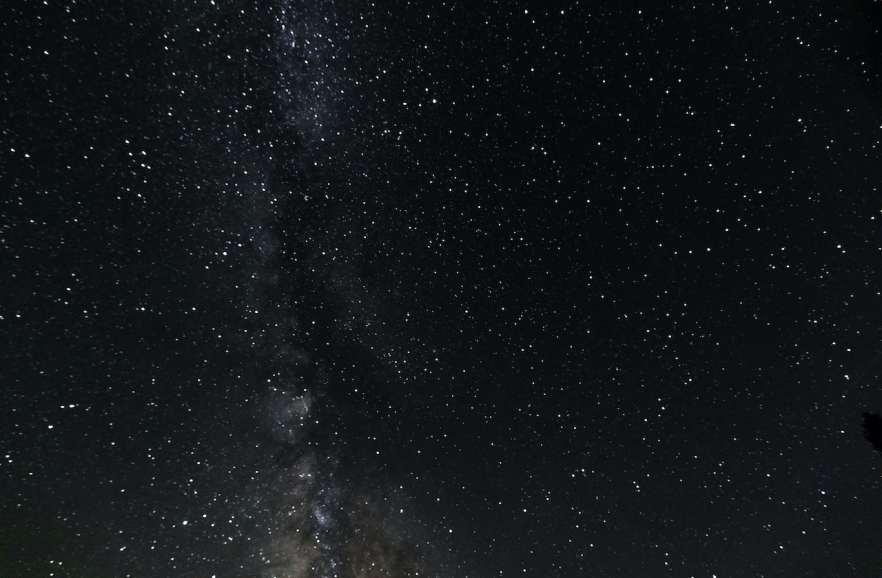
Kravchuk



1-3: Tampa Bay Comic Convention (in-person convention; Doug Jones, John Rhys-Davies attending)
2-3: William Shatner makes an appearance after Star Trek II screening at two locations in Florida
6-10: STLV - Trek to Vegas (in-person convention)
8-10: FanExpo Boston (in-person convention; John Rhys-Davies, Christopher Lloyd, Simon Pegg, Jason Isaacs, Mark Sheppard attending)
15-17: Trekonderoga (in-person event; Kate Mulgrew, Nana Visitor, Terry Farrell, Armin Shimerman attending)
15-17: GalaxyCon San Jose (in-person convention; William Shatner, Ron Perlman, Jason Isaacs, Alan Ruck attending)
23-24: Trek to Orlando (in-person convention)
29-31: Destination, An Unofficial Star Trek Fan Convention (in-person convention)
29-31: Nightmare Weekend Cleveland (in-person convention; Denise Crosby, Chris Sarandon, Clint Howard, Jeffrey Combs attending)
August 28th - September 1st: Dragon Con (in-person convention; Dr. Erin Macdonald, Andrew Robinson, Garrett Wang, Robert Duncan McNeill, Robert Picardo, Tim Russ, William Shatner,

MARINA S PAGE Links






